The Bihar Board 2024 Class 10th Science exam is being conducted (February 20, 2024). The question paper along with the solution PDF will be available here to download once the exam is conducted successfully.
The Bihar Board 10th Boards Science exam is expected to be easy to moderate based on previous year trends. The Science exam includes Physics (Electricity, Magnetic Effects of Electric Current), Chemistry (Chemical Reactions, Acids and Bases, Metals and Non-Metals), and Biology (Life Processes, Reproduction, Heredity, and Environment).
Bihar Board Class 10 Science (Set 1 Shift 1) Question Paper 2024 with Solutions
| Bihar Board Class 10 Science (Set 1 Shift 1) Question Paper with Answer Key | Check Solution |
Bihar Board Class 10 Science Question Paper 2024 with Solutions
Section-A
The chemical formula of Chalk is:
View Solution
The chemical formula for chalk is \( CaCO_3 \), which is Calcium Carbonate. Chalk is a naturally occurring form of limestone that primarily consists of calcium carbonate. Quick Tip: For inorganic compounds like Calcium Carbonate, knowing the basic formulas for common substances like oxides and carbonates can help in quickly identifying their chemical structures and uses.
Which of the following metals is the most ductile?
View Solution
Gold is the most ductile metal. It can be drawn into very thin wires without breaking, making it ideal for various applications, including electronics and jewelry. Quick Tip: Gold is widely used for its ductility, malleability, and conductivity in electronics and jewelry making.
How many structural isomers of pentane, having molecular formula \( C_5H_{12} \) are possible?
View Solution
Pentane (\( C_5H_{12} \)) has four structural isomers, namely:
1. n-pentane
2. isopentane (2-methylbutane)
3. neopentane (2,2-dimethylpropane)
4. 3-methylbutane
These are the only four possible structural isomers for pentane. Quick Tip: Structural isomerism occurs when compounds have the same molecular formula but differ in the connectivity of their atoms.
The functional group \( >CO \) is called:
View Solution
The functional group \( >CO \) is known as the carbonyl group. It is found in aldehydes, ketones, carboxylic acids, and their derivatives. Quick Tip: The carbonyl group is a key functional group in organic chemistry, playing a central role in many important reactions such as nucleophilic addition and substitution.
A metal reacts with oxygen to form a compound with high melting point. This compound is soluble in water. Which of the following elements can it be?
View Solution
Calcium reacts with oxygen to form calcium oxide, \( CaO \), which has a high melting point and is soluble in water. This compound reacts with water to form calcium hydroxide. Quick Tip: Calcium oxide is basic in nature and forms calcium hydroxide when dissolved in water. This is a common property of alkaline earth metal oxides.
Malachite is an ore of which metal?
View Solution
Malachite is a copper carbonate mineral, \( Cu_2(CO_3)(OH)_2 \), and is an important ore of copper. Quick Tip: Malachite is a copper ore, and the extraction of copper from malachite involves heating it to produce copper oxide, which is then reduced to copper metal.
The process of coating a layer of zinc on iron is called:
View Solution
The process of coating iron with a layer of zinc to prevent rusting is known as galvanization. Zinc acts as a sacrificial anode, protecting iron from corrosion. Quick Tip: Galvanization is used to protect iron and steel from rusting, especially in outdoor and marine environments.
Which of the following acids is found in vinegar?
View Solution
Vinegar contains acetic acid, \( CH_3COOH \), which is responsible for its sour taste and pungent odor. Quick Tip: Acetic acid is a weak acid and is commonly used in cooking and as a preservative in the form of vinegar.
The absolute refractive index of air is actually:
View Solution
The refractive index of air is considered to be 1. This is because the speed of light in air is nearly the same as in a vacuum. Quick Tip: The refractive index is a measure of how much light slows down as it passes through a medium. The refractive index of air is taken as 1 for simplicity.
Mirror used by ENT (Ear-Nose-Throat) doctor is:
View Solution
ENT doctors use concave mirrors for examining the ear, nose, and throat. The concave shape allows for magnified images, making it easier to view small structures. Quick Tip: Concave mirrors are used in optical instruments because they can focus light to a point, making them useful for magnification in medical devices.
Which of the following gases is used in welding?
(B) Ethyne
View Solution
Ethyne (also known as acetylene, \( C_2H_2 \)) is commonly used in welding because it burns with a hot flame. Quick Tip: Acetylene is one of the most common gases used in oxy-acetylene welding due to its high temperature when burned.
The general formula of an alkene is:
View Solution
The general formula for alkenes, which are hydrocarbons containing at least one double bond, is \( C_n H_{2n} \), where \( n \) is the number of carbon atoms. Quick Tip: Alkenes are unsaturated hydrocarbons, meaning they contain one or more double bonds between carbon atoms.
Which one of the following is a clean energy source?
View Solution
Natural gas is considered a cleaner energy source compared to coal and wood because it burns more efficiently and produces fewer harmful emissions. Quick Tip: Natural gas produces fewer greenhouse gases compared to coal and wood, making it a cleaner fossil fuel alternative.
Within which pH range does our body work?
View Solution
The normal pH range of the human body is slightly alkaline, typically between 7.0 and 7.8. This is the pH range where most biochemical processes occur optimally. Quick Tip: The pH of blood and other bodily fluids is tightly regulated to maintain homeostasis, typically between 7.35 and 7.45.
Which of the following is the chemical formula of glucose?
View Solution
Glucose is a simple sugar with the molecular formula \( C_6H_{12}O_6 \). It is an important energy source in living organisms. Quick Tip: Glucose is a monosaccharide that is broken down during cellular respiration to release energy.
The atomic number of sodium is:
View Solution
The atomic number of sodium is 11, which means it has 11 protons in its nucleus. Quick Tip: The atomic number determines the element's identity and the number of protons in the nucleus of an atom.
The atomic number of magnesium is 12. What is its valency?
View Solution
Magnesium has an atomic number of 12, meaning it has 2 electrons in its outermost shell. It loses these 2 electrons to form a stable ion, making its valency 2. Quick Tip: The valency of an element is the number of electrons it gains, loses, or shares to achieve a stable electron configuration, usually corresponding to the nearest noble gas.
Which of the following metals is displaced from its salt solution by iron?
View Solution
Iron can displace copper from its salt solution because iron is more reactive than copper. This is a result of the reactivity series of metals. Quick Tip: In the reactivity series, a more reactive metal can displace a less reactive metal from its salt solution.
What is the chemical formula of ethyl alcohol?
View Solution
Ethyl alcohol, also known as ethanol, has the chemical formula \( C_2H_5OH \). It is commonly used as a solvent, in alcoholic beverages, and as a fuel. Quick Tip: Ethanol is an alcohol that is widely used as a solvent, fuel, and in the production of alcoholic drinks.
What is the chemical formula of quicklime?
View Solution
Quicklime is also known as calcium oxide, \( CaO \). It is produced by heating calcium carbonate (limestone) in a kiln. Quick Tip: Quicklime is highly reactive with water, forming slaked lime (\( Ca(OH)_2 \)).
Which of the following is an iodized salt?
View Solution
Iodized salt is regular sodium chloride (\( NaCl \)) mixed with potassium iodide (\( KI \)), which provides iodine to prevent iodine deficiency. Quick Tip: Iodized salt helps prevent iodine deficiency, which can cause thyroid-related health problems.
What is the chemical name of Plaster of Paris?
View Solution
Plaster of Paris is made by heating gypsum, which contains calcium sulphate dihydrate, to form calcium sulphate hemihydrate. Quick Tip: Plaster of Paris is used for making casts and molds, and it hardens when mixed with water.
What is present in cathode rays?
View Solution
Cathode rays are composed of electrons, which are negatively charged subatomic particles emitted from the cathode in a vacuum tube. Quick Tip: Cathode rays were crucial in the discovery of the electron by J.J. Thomson.
Which mode of nutrition is found in fungi?
View Solution
Fungi obtain nutrients through saprophytic nutrition, where they break down dead organic matter for nourishment. Quick Tip: Fungi play an important ecological role as decomposers, breaking down dead organic material and recycling nutrients.
Which of the following lenses is used to remove short-sightedness?
View Solution
Concave lenses are used to correct short-sightedness (myopia), as they diverge light rays, helping to focus images on the retina. Quick Tip: Concave lenses are thinner at the center and help in spreading the light rays for individuals with myopia.
Most of the refraction of the light rays entering the eye occurs at:
View Solution
The most significant refraction of light occurs at the outer surface of the cornea, as it is the first point of contact for light entering the eye. Quick Tip: The cornea bends light most effectively before it enters the eye, contributing to the overall focusing of the image.
Which of the following is the unit of power of lens?
View Solution
The unit of lens power is dioptre (D), defined as the reciprocal of the focal length in meters. Quick Tip: The power of a lens is measured in dioptres, and it is calculated as the inverse of the focal length (in meters).
What type of lens is found in human eye?
View Solution
The human eye contains a convex lens, which helps in focusing light onto the retina to form a clear image. Quick Tip: Convex lenses focus light inward and are essential for focusing images onto the retina in the human eye.
Which mirror is used as shaving mirror?
View Solution
Concave mirrors are used as shaving mirrors because they produce magnified images, which help in seeing finer details clearly. Quick Tip: Concave mirrors are used in shaving mirrors as they magnify the image, providing a clearer view.
If an image obtained by a concave mirror is virtual, erect, and larger than the object, then where should be the location of the object?
View Solution
For a concave mirror to form a virtual, erect, and magnified image, the object should be placed between the pole and the principal focus of the mirror. Quick Tip: When the object is between the pole and the focus of a concave mirror, the image formed is virtual, erect, and magnified.
The capacity to bend rays of light is called:
View Solution
The ability of a lens to bend light rays is referred to as the power of the lens, and it is inversely related to its focal length. Quick Tip: The power of a lens is measured as the inverse of its focal length (in meters) and is expressed in dioptres.
The image obtained by a concave lens is:
View Solution
A concave lens always forms a diminished, virtual, and erect image, regardless of the object’s position. Quick Tip: Concave lenses always form virtual, upright, and smaller images compared to the object.
The word 'Gene' was coined by:
View Solution
The term 'gene' was coined by the Danish botanist Wilhelm Johannsen in 1909. Quick Tip: Johannsen's work on plant breeding led to the introduction of the term 'gene' as a unit of heredity.
In which of the following binary fissions does not occur?
View Solution
Yeast reproduces primarily by budding, not binary fission. Paramecium, Euglena, and Amoeba reproduce by binary fission. Quick Tip: Binary fission is a type of asexual reproduction where the organism divides into two equal parts. Yeast, however, reproduces by budding.
Pollen grains are formed in which of the following?
View Solution
Pollen grains are produced in the anther of a flower. The anther is the part of the stamen, which is responsible for male gametophyte formation. Quick Tip: Pollen grains are necessary for the fertilization of plants, and they are transferred from the male to the female reproductive organs during pollination.
Blood pressure is controlled by:
View Solution
Blood pressure is regulated by the adrenal glands, particularly through the release of hormones like adrenaline and aldosterone. Quick Tip: Adrenal glands produce hormones that control various physiological functions, including blood pressure regulation through aldosterone.
Which disease is related to respiratory system?
View Solution
Pneumonia is a respiratory disease that causes inflammation of the lungs, typically due to infection. Quick Tip: Pneumonia can result from viral, bacterial, or fungal infections and is often treated with antibiotics or antiviral drugs depending on the cause.
The sugar level in blood is controlled by:
View Solution
Step 1: Understanding the role of insulin in blood sugar regulation.
Insulin is a hormone secreted by the pancreas that helps regulate blood sugar levels by promoting the uptake of glucose into cells and reducing blood glucose concentration.
Step 2: Explanation of incorrect options.
- Estrogen and Progesterone are hormones primarily involved in reproductive functions.
- Relaxin is associated with pregnancy and childbirth, not blood sugar regulation. Quick Tip: Insulin is the key hormone responsible for lowering blood sugar levels. It facilitates glucose uptake by cells, especially muscle and liver cells, and prevents excessive glucose production by the liver.
Which is the longest cell of the human body?
View Solution
Step 1: Understanding the longest cell in the human body.
Nerve cells, or neurons, are the longest cells in the human body. Some neurons, like the sciatic nerve, can extend from the spinal cord to the toes, reaching lengths of over a meter.
Step 2: Explanation of incorrect options.
- Muscles are composed of fibers but are not single cells.
- Blood cells are among the smallest cells.
- Heart cells are specialized muscle cells but are not the longest. Quick Tip: Nerve cells (neurons) are the longest cells in the body, playing a crucial role in transmitting electrical signals over long distances.
Which part of the food is digested in the buccal cavity?
View Solution
Step 1: Understanding digestion in the buccal cavity.
Digestion begins in the buccal cavity (mouth) where salivary amylase breaks down carbohydrates into simpler sugars.
Step 2: Explanation of incorrect options.
- Protein digestion starts in the stomach.
- Fat digestion primarily occurs in the small intestine.
- Nucleic acid digestion occurs in the intestines. Quick Tip: Salivary amylase is the enzyme responsible for the initial digestion of carbohydrates in the mouth.
Latex is found in:
View Solution
Step 1: Understanding Latex secretion in plants.
Latex is a milky fluid produced by certain plants, including Nerium. It serves as a defense mechanism against herbivores.
Step 2: Explanation of incorrect options.
- Pinus does not produce latex; it produces resin.
- Rose and Mango do not produce latex. Quick Tip: Latex is found in plants like Nerium, Hevea (rubber tree), and Euphorbia, playing a role in plant defense.
Androgen is secreted by the:
View Solution
Step 1: Understanding the role of androgens.
Androgens, such as testosterone, are male sex hormones secreted by the testes, playing a crucial role in male reproductive function and secondary sexual characteristics.
Step 2: Explanation of incorrect options.
- Ovaries primarily secrete estrogen and progesterone.
- Duodenum and Stomach are parts of the digestive system and do not secrete androgens. Quick Tip: Testes are the primary site of androgen production, with testosterone being the most important male sex hormone.
Style is part of:
View Solution
Step 1: Understanding the structure of the flower.
The gynoecium is the female reproductive part of a flower. The style is the elongated structure connecting the ovary and the stigma.
Step 2: Explanation of incorrect options.
- Filament is a part of the stamen (male reproductive organ).
- Ovary is the basal part of the gynoecium, but style is a separate structure.
- Stamen is the male reproductive organ and does not include the style. Quick Tip: The gynoecium is composed of three main parts: the stigma, style, and ovary, which play essential roles in reproduction.
Duodenum is a part of:
View Solution
Step 1: Understanding the function of the duodenum.
The duodenum is the first part of the small intestine where most of the digestion occurs. It receives bile from the liver and digestive enzymes from the pancreas.
Step 2: Explanation of incorrect options.
- Buccal cavity is the mouth, where food is initially chewed.
- Stomach is responsible for protein digestion but not the duodenum.
- Large intestine is involved in water absorption, not digestion. Quick Tip: The duodenum is the first section of the small intestine and plays a crucial role in digestion by receiving digestive enzymes and bile.
In human beings, nasal cavity, larynx, trachea, and lungs combine to form:
View Solution
Step 1: Understanding the respiratory system.
The nasal cavity, larynx, trachea, and lungs together form the respiratory system, which is responsible for gas exchange (oxygen intake and carbon dioxide removal).
Step 2: Explanation of incorrect options.
- Excretory system is involved in waste elimination via the kidneys.
- Reproductive system is responsible for reproduction.
- Digestive system processes food but does not include the lungs. Quick Tip: The respiratory system includes the nasal cavity, larynx, trachea, bronchi, and lungs, essential for breathing and oxygen exchange.
In plants, xylem is responsible for:
View Solution
Step 1: Understanding the function of xylem.
Xylem is a vascular tissue in plants responsible for transporting water and minerals from the roots to other parts of the plant.
Step 2: Explanation of incorrect options.
- Oxygen conduction is not performed by xylem.
- Amino acid conduction is mainly handled by phloem.
- Food conduction is the function of phloem, not xylem. Quick Tip: Xylem transports water and minerals from roots to leaves, while phloem transports food produced in the leaves to other parts of the plant.
Gibberellin is:
View Solution
Step 1: Understanding gibberellins.
Gibberellins are plant hormones that regulate growth, particularly stem elongation, seed germination, and flowering.
Step 2: Explanation of incorrect options.
- Enzymes are biological catalysts, but gibberellin is a hormone.
- Carbohydrates and Fats are macronutrients, not plant hormones. Quick Tip: Gibberellins promote plant growth by elongating stems and aiding in seed germination.
Wilting of leaves is due to which phytohormone?
View Solution
Step 1: Understanding the function of abscisic acid.
Abscisic acid is known as the stress hormone in plants. It induces leaf wilting and helps plants conserve water by closing stomata.
Step 2: Explanation of incorrect options.
- Ethylene regulates fruit ripening.
- Cytokinin promotes cell division.
- Auxin is involved in cell elongation and growth. Quick Tip: Abscisic acid causes stomatal closure to prevent water loss, leading to leaf wilting under drought conditions.
Out of a combination of resistors, one resistor is removed, and it is found that the net resistance has increased. The resistor was connected in:
View Solution
Step 1: Understanding the effect of removing a resistor.
In a parallel circuit, the total resistance is given by:
\[ \frac{1}{R_{total}} = \frac{1}{R_1} + \frac{1}{R_2} + \frac{1}{R_3} + ... \]
Removing a resistor from a parallel circuit reduces the number of available pathways for current flow, increasing the total resistance.
Step 2: Explanation of incorrect options.
- Series connection: Removing a resistor in series decreases total resistance.
- Cannot be said and None of these are incorrect as the behavior is predictable. Quick Tip: In a parallel circuit, removing a resistor increases total resistance, whereas in a series circuit, removing a resistor decreases total resistance.
Two appliances rated as (60 W, 200 V) and (40 W, 200 V) are connected across 100 V supply in a room. The total power consumed is:
View Solution
Step 1: Using the power formula for a resistive load.
The resistance of an appliance is calculated as:
\[ R = \frac{V^2}{P} \]
For the first appliance (60 W, 200 V):
\[ R_1 = \frac{200^2}{60} = \frac{40000}{60} = 666.67 \Omega \]
For the second appliance (40 W, 200 V):
\[ R_2 = \frac{200^2}{40} = \frac{40000}{40} = 1000 \Omega \]
Step 2: Power consumption at 100 V.
Power consumed by each appliance at 100V:
\[ P_1 = \frac{100^2}{666.67} = 15 W \]
\[ P_2 = \frac{100^2}{1000} = 10 W \]
Total power:
\[ P = P_1 + P_2 = 15 + 10 = 15 W \] Quick Tip: For a resistive appliance, power consumption at different voltages is calculated using \( P = \frac{V^2}{R} \), where \( R = \frac{V^2}{P} \).
Which of the following expressions represent(s) electric power in the circuit?
View Solution
Step 1: Understanding power formulas.
The power dissipated in an electrical circuit can be calculated using:
\[ P = VI \]
\[ P = I^2 R \]
\[ P = \frac{V^2}{R} \]
All three expressions are valid representations of electrical power. Quick Tip: Power in an electrical circuit can be expressed in multiple ways: \( P = VI \), \( P = I^2R \), and \( P = \frac{V^2}{R} \).
The maximum value of magnification in a convex mirror is:
View Solution
Step 1: Understanding magnification in convex mirrors.
Magnification (\( m \)) in a convex mirror is given by:
\[ m = \frac{-v}{u} \]
For a convex mirror:
- The image is always virtual, erect, and diminished.
- The magnification is always less than 1.
- The maximum magnification occurs when the object is at infinity, producing an image at the focal point with \( m = 1 \).
Step 2: Explanation of incorrect options.
- 2: Convex mirrors do not produce magnification greater than 1.
- \(\frac{1}{2}\): It is a possible magnification value but not the maximum.
- Infinite: Only concave mirrors at focal points can give infinite magnification. Quick Tip: A convex mirror always forms a virtual, erect, and diminished image with a magnification value between 0 and 1.
Potential difference is measured by:
View Solution
Step 1: Understanding how potential difference is measured.
Potential difference (voltage) across a circuit component is measured using a voltmeter, which is connected in parallel to the component.
Step 2: Explanation of incorrect options.
- Ammeter measures current, not voltage.
- Voltameter is used in electrolysis, not for measuring voltage.
- All of these is incorrect because only the voltmeter is used for measuring voltage. Quick Tip: A voltmeter is always connected in parallel to measure potential difference, while an ammeter is connected in series to measure current.
Which of the following statements is true?
View Solution
Step 1: Understanding Ohm's Law.
Ohm’s Law states:
\[ V = IR \]
where \( V \) is voltage, \( I \) is current (ampere), and \( R \) is resistance (ohm).
Step 2: Explanation of incorrect options.
- Option (A) is correct in meaning but not in the standard notation.
- Option (C) rearranges Ohm’s Law correctly but does not define voltage.
- Option (D) incorrectly states that ampere equals the sum of ohm and volt, which is incorrect. Quick Tip: Ohm’s Law states that \( V = IR \), meaning voltage is the product of current and resistance.
Which of the following substances is a conductor?
View Solution
Step 1: Identifying conductors and insulators.
Conductors allow electricity to flow through them, while insulators do not. Aluminium is a good conductor of electricity.
Step 2: Explanation of incorrect options.
- Mica is an insulator.
- Glass is an insulator.
- Porcelain is an insulator. Quick Tip: Metals like aluminium, copper, and silver are good conductors, whereas materials like glass, mica, and porcelain are insulators.
Which of the following is necessary to obtain nuclear energy?
View Solution
Step 1: Understanding nuclear energy production.
Uranium-235 is a key element used in nuclear reactors and weapons due to its ability to undergo fission, releasing enormous energy.
Step 2: Explanation of incorrect options.
- Helium is an inert gas and does not participate in nuclear fission.
- Aluminium is a common metal but is not used in nuclear reactors.
- Chromium is used in industrial applications but not in nuclear energy. Quick Tip: Uranium-235 and Plutonium-239 are the primary isotopes used in nuclear fission to generate energy.
Which of the following is the male gamete?
View Solution
Step 1: Understanding male gametes.
The sperm cell is the male gamete responsible for fertilizing the ovum in sexual reproduction.
Step 2: Explanation of incorrect options.
- Ovum is the female gamete.
- Ovary is the organ that produces ova.
- Fallopian tube is a part of the female reproductive system where fertilization occurs. Quick Tip: Sperms are motile male gametes produced in the testes, while ova are non-motile female gametes.
An example of a parasitic plant is:
View Solution
Step 1: Understanding parasitic plants.
Cuscuta (Dodder) is a parasitic plant that derives nutrients from host plants by penetrating their vascular tissues.
Step 2: Explanation of incorrect options.
- Mushroom is a fungus, not a plant.
- Bryophyllum is known for vegetative reproduction, not parasitism.
- Pinus is a coniferous tree and not a parasitic plant. Quick Tip: Parasitic plants like Cuscuta (Dodder) and Rafflesia depend on host plants for survival, unlike non-parasitic plants.
Binary fission is found in:
View Solution
Step 1: Understanding binary fission.
Binary fission is an asexual reproduction method where a single organism splits into two identical daughter cells. It is common in prokaryotic organisms like bacteria.
Step 2: Explanation of incorrect options.
- Sponge reproduces by budding or fragmentation.
- Hydra undergoes budding, not binary fission.
- None of these is incorrect because bacteria exhibit binary fission. Quick Tip: Binary fission is a type of asexual reproduction seen in bacteria and some protists, where a single cell divides into two identical daughter cells.
Which hormone is secreted from the pancreas?
View Solution
Step 1: Understanding the role of insulin.
The pancreas secretes insulin, a hormone that regulates blood sugar levels by promoting glucose uptake into cells.
Step 2: Explanation of incorrect options.
- Epinephrine and Norepinephrine are secreted by the adrenal glands.
- Testosterone is secreted by the testes. Quick Tip: Insulin is a hormone secreted by the pancreas that helps regulate blood sugar levels by facilitating glucose uptake into cells.
Which among the following is responsible for clotting of blood?
View Solution
Step 1: Understanding blood clotting.
Blood clotting is facilitated by platelets (thrombocytes) that aggregate at the site of injury and release clotting factors.
Step 2: Explanation of incorrect options.
- WBC (White Blood Cells) are involved in immunity, not clotting.
- RBC (Red Blood Cells) transport oxygen but do not play a role in clotting.
- None of these is incorrect because platelets are responsible for clotting. Quick Tip: Blood clotting is primarily carried out by platelets, which form a plug at the injury site and initiate the coagulation process.
Which type of nitrogenous wastes is excreted by living organisms?
View Solution
Step 1: Understanding nitrogenous waste excretion.
Different organisms excrete different nitrogenous wastes based on their habitat and evolutionary adaptations:
- Ureotelic organisms (humans, amphibians) excrete urea.
- Ammonotelic organisms (fish, amphibians) excrete ammonia.
- Uricotelic organisms (birds, reptiles) excrete uric acid.
Step 2: Explanation of correct answer.
Since different living organisms excrete different nitrogenous wastes, the correct answer is "All of these." Quick Tip: Organisms excrete nitrogenous waste in different forms: - Ureotelic (urea) - Humans, amphibians. - Ammonotelic (ammonia) - Fish, amphibians. - Uricotelic (uric acid) - Birds, reptiles.
The change in body that occurs during adolescence is due to:
View Solution
Step 1: Understanding hormonal changes in adolescence.
Adolescence is marked by the production of sex hormones:
- Testosterone in males promotes muscle growth, facial hair, and voice changes.
- Estrogen in females promotes breast development and menstrual cycle regulation.
Step 2: Explanation of incorrect options.
- Thyroxine regulates metabolism but does not directly trigger puberty. Quick Tip: Testosterone (in males) and estrogen (in females) are responsible for the physical changes during adolescence.
The body is balanced by the organ:
View Solution
Step 1: Understanding the role of the cerebellum.
The cerebellum is responsible for maintaining balance, posture, and coordinated movements.
Step 2: Explanation of incorrect options.
- Cranium is the skull that protects the brain.
- Cerebrum controls higher cognitive functions like thinking and memory.
- Brain stem controls involuntary functions like heartbeat and respiration. Quick Tip: The cerebellum is responsible for balance and coordination, while the cerebrum controls voluntary actions and thinking.
The above reaction is an example of a:
\[ Zn + CuSO_4 \rightarrow ZnSO_4 + Cu \]
View Solution
Step 1: Understanding displacement reactions.
In a displacement reaction, a more reactive element replaces a less reactive element from its compound. Here, zinc (\text{Zn) is more reactive than copper (\text{Cu), so it displaces copper from copper sulfate (\text{CuSO_4) to form zinc sulfate (\text{ZnSO_4).
Step 2: Explanation of incorrect options.
- Combination reaction: This involves two or more reactants combining to form a single product.
- Double displacement reaction: Involves the exchange of ions between two compounds.
- Decomposition reaction: A single compound breaks down into simpler substances. Quick Tip: A displacement reaction occurs when a more reactive metal replaces a less reactive metal in a compound.
On moving from right to left across the period of the modern periodic table, the atomic size:
View Solution
Step 1: Understanding atomic size trends.
As we move from left to right across a period in the periodic table:
- The atomic number increases, leading to a greater nuclear charge.
- The increased attraction between electrons and the nucleus reduces atomic radius.
Step 2: Explanation of incorrect options.
- Increases: Incorrect, as atomic size actually decreases.
- Remains unchanged: Atomic size varies across periods, so this is incorrect.
- None of these: Incorrect, as a clear trend exists. Quick Tip: Across a period (left to right), atomic size decreases due to increasing nuclear charge, which pulls electrons closer to the nucleus.
When magnesium ribbon is ignited, the flame produced by it is:
View Solution
Step 1: Understanding the combustion of magnesium.
When magnesium ribbon is burned in air, it reacts with oxygen to form magnesium oxide (MgO). This reaction produces an intense dazzling white flame.
\[ 2Mg + O_2 \rightarrow 2MgO \]
Step 2: Explanation of incorrect options.
- Yellow, Blue, and Red flames are characteristic of different substances, but not magnesium. Quick Tip: Magnesium burns with a dazzling white flame and forms magnesium oxide (\text{MgO).
The molecular formula of ethane is \( C_2H_6 \). It has:
View Solution
Step 1: Understanding the structure of ethane.
Ethane (C_2\text{H_6) consists of:
- A single covalent bond (\text{C–C) between two carbon atoms.
- Each carbon forms single covalent bonds with three hydrogen atoms.
Total number of covalent bonds:
\[ \text{6 (C–H bonds) + 1 (C–C bond) = 7 covalent bonds \]
Step 2: Explanation of incorrect options.
- 9, 8, or 6 covalent bonds are incorrect as ethane has exactly 7 covalent bonds. Quick Tip: Ethane (\( C_2H_6 \)) has 7 covalent bonds: 6 C–H bonds and 1 C–C bond.
The chemical substance used as a cast for setting broken bones in surgery is:
View Solution
Step 1: Understanding Plaster of Paris.
Plaster of Paris (CaSO_4 \cdot \frac{1{2 H_2O) is used in orthopedics for setting broken bones. When mixed with water, it hardens into solid gypsum.
\[ \text{CaSO_4 \cdot \frac{1}{2} H_2O + H_2O \rightarrow CaSO_4 \cdot 2H_2O \]
Step 2: Explanation of incorrect options.
- Washing soda (Na_2\text{CO_3) is used in cleaning.
- Quicklime (\text{CaO) is used in cement but not in bone setting.
- Gypsum (\text{CaSO_4 \cdot 2H_2O) is a natural form of calcium sulfate but does not set like Plaster of Paris. Quick Tip: Plaster of Paris (\text{CaSO_4 \cdot \frac{1}{2} H_2O) is used in orthopedic applications as it hardens upon mixing with water.
Which one of the following is a covalent compound?
View Solution
Step 1: Understanding covalent compounds.
Covalent compounds are formed by the sharing of electrons between non-metal atoms. Methane (CH\(_4\)) is a covalent compound because it consists of carbon and hydrogen atoms sharing electrons.
Step 2: Explanation of incorrect options.
- KCl, NaCl, and MgCl\(_2\) are ionic compounds formed by the transfer of electrons. Quick Tip: Covalent compounds are formed by electron sharing, while ionic compounds are formed by electron transfer.
An aqueous solution of ammonium chloride is:
View Solution
Step 1: Understanding the nature of ammonium chloride solution.
Ammonium chloride (NH\(_4\)Cl) is a salt derived from a strong acid (HCl) and a weak base (NH\(_4\)OH). When dissolved in water, it hydrolyzes to release \( H^+ \) ions, making the solution acidic.
\[ NH_4Cl \rightarrow NH_4^+ + Cl^- \]
\[ NH_4^+ + H_2O \rightarrow NH_3 + H_3O^+ \]
Step 2: Explanation of incorrect options.
- Neutral: Only salts of strong acids and strong bases are neutral.
- Basic: Ammonium chloride solution is acidic, not basic. Quick Tip: A salt derived from a strong acid and a weak base forms an acidic solution, while one from a strong base and weak acid forms a basic solution.
Which of the following is a good conductor of electricity?
View Solution
Step 1: Understanding electrical conductivity.
Graphite is an allotrope of carbon where electrons are free to move between layers, making it a good conductor of electricity.
Step 2: Explanation of incorrect options.
- Plastic, Iodine, and Sulphur are non-conductors because they do not have free-moving electrons. Quick Tip: Graphite is the only non-metal that conducts electricity due to the mobility of delocalized electrons.
The radius of curvature of a concave mirror of focal length 20 cm is:
View Solution
Step 1: Understanding the relationship between focal length and radius of curvature.
The radius of curvature (\( R \)) and the focal length (\( f \)) of a concave mirror are related by:
\[ R = 2f \]
Step 2: Calculating the radius of curvature.
Given \( f = 20 \) cm,
\[ R = 2 \times 20 = 40 cm \]
Step 3: Explanation of incorrect options.
- 15 cm, 10 cm, 60 cm are incorrect as they do not follow the formula \( R = 2f \). Quick Tip: For any spherical mirror, the radius of curvature (\( R \)) is always twice the focal length (\( f \)), i.e., \( R = 2f \).
A white ray is incident obliquely on a glass slab. Which of the following will occur with the first refraction?
View Solution
Step 1: Understanding the effects of light refraction.
When a white light ray is incident obliquely on a glass slab, the following phenomena occur:
- Deviation: The light ray bends due to a change in medium.
- Total internal reflection: If the angle exceeds the critical angle, total internal reflection may occur.
- Dispersion: White light separates into its constituent colors due to different refractive indices.
Step 2: Explanation of correct answer.
All of these phenomena can occur depending on the conditions, making (D) the correct choice. Quick Tip: When light passes through a glass slab, deviation, dispersion, and total internal reflection can occur depending on the angle of incidence.
In domestic electric circuit, the colour of neutral wire is:
View Solution
Step 1: Understanding electrical wiring color codes.
In domestic wiring:
- Live wire is red or brown.
- Neutral wire is black or blue.
- Earth wire is green or yellow-green.
Step 2: Explanation of incorrect options.
- Red is used for live wire.
- Green is used for the earth wire.
- Yellow is not typically used for neutral wire. Quick Tip: In household electrical wiring, the neutral wire is black or blue, the live wire is red or brown, and the earth wire is green or yellow-green.
In which device does the split ring act as a commutator?
View Solution
Step 1: Understanding the function of a commutator.
A split ring commutator is used in electric motors to reverse the direction of current, ensuring continuous rotation in one direction.
Step 2: Explanation of incorrect options.
- Galvanometer, Voltmeter, and Electric generator do not use a split ring commutator for rotation control. Quick Tip: A split ring commutator in an electric motor reverses current direction to maintain continuous rotation.
The device which directly converts solar energy into electricity is:
View Solution
Step 1: Understanding solar cells.
Solar cells convert solar energy directly into electrical energy through the photovoltaic effect.
Step 2: Explanation of incorrect options.
- Daniel cell, Dry cell, and Eveready cell are chemical-based batteries that do not convert solar energy into electricity. Quick Tip: A solar cell converts sunlight into electricity using the photovoltaic effect.
A bulb filament has a resistance of 1200 ohms. It is connected to a 220 V power supply. How much current will it draw?
View Solution
Step 1: Using Ohm’s Law.
Ohm’s Law states:
\[ V = IR \]
where
- \( V = 220V \) (voltage),
- \( R = 1200 \Omega \) (resistance),
- \( I \) (current) needs to be found.
Step 2: Calculating current.
\[ I = \frac{V}{R} = \frac{220}{1200} = 0.18 A \]
Step 3: Explanation of incorrect options.
- 12 A, 2.8 A, and 2 A are incorrect as they do not match the correct calculation. Quick Tip: Ohm’s Law (\( V = IR \)) helps determine current when voltage and resistance are known.
The electromotive force of a cell is 1.5 V. The work done on passing a charge of 1 C will be:
View Solution
Step 1: Using the formula for electrical work.
Work done (\( W \)) in moving a charge is given by:
\[ W = VQ \]
where:
- \( V = 1.5V \) (voltage),
- \( Q = 1C \) (charge).
Step 2: Calculating work done.
\[ W = 1.5 \times 1 = 1.5 J \]
Step 3: Explanation of incorrect options.
- 1.5 V is incorrect as work is measured in joules, not volts.
- 3 J is incorrect since the correct value is 1.5 J.
- 0 is incorrect as work is done in moving the charge. Quick Tip: The work done in moving a charge in an electric field is calculated using \( W = VQ \), where \( V \) is voltage and \( Q \) is charge.
Why is a rainbow colourful?
View Solution
Step 1: Understanding rainbow formation.
Rainbows are formed due to the dispersion of sunlight by water droplets in the atmosphere. Each droplet acts like a prism, splitting white light into its constituent colors.
Step 2: Explanation of incorrect options.
- Absorption of water droplets does not create color separation.
- Dispersion of white light by air does not occur in rainbow formation. Quick Tip: A rainbow is formed when sunlight undergoes dispersion, reflection, and refraction inside water droplets.
Section-B
(Physics)
Find the power of a concave lens of 2 m focal length.
View Solution
The power (\( P \)) of a lens is given by the formula:
\[ P = \frac{1}{f} \quad (in meters) \]
Given \( f = -2 \) m (negative for concave lenses):
\[ P = \frac{1}{-2} = -0.5 D \]
Final Answer: The power of the concave lens is \(-0.5D\). Quick Tip: The power of a lens is measured in diopters (D), with concave lenses having negative power and convex lenses having positive power.
Define ampere.
View Solution
An ampere is the unit of electric current in the SI system. It is defined as:
“One ampere is the amount of current flowing when one coulomb of charge passes through a conductor in one second.”
Mathematically:
\[ 1A = \frac{1C}{1s} \] Quick Tip: Ampere is the SI unit of electric current, and it is measured using an ammeter.
Write any three uses of a concave mirror.
View Solution
1. Shaving/Makeup Mirrors: Concave mirrors provide magnified images, useful for personal grooming.
2. Headlights and Torches: They focus light into parallel beams, making them useful in vehicle headlights.
3. Dentistry and Ophthalmology: Used in medical instruments for focused views of internal structures. Quick Tip: Concave mirrors can form both real and virtual images, depending on the object's position.
What is a non-renewable source of energy? Give two examples of it.
View Solution
Definition: Non-renewable energy sources are those that cannot be replenished in a short time and are depleted with use.
Examples:
1. Coal: A fossil fuel used in electricity generation.
2. Petroleum: Used in transportation and manufacturing. Quick Tip: Non-renewable energy sources take millions of years to form and are exhaustible, unlike renewable sources like solar or wind energy.
Explain scattering of light.
View Solution
Scattering of light is the phenomenon where light rays are deflected in different directions when they encounter small particles in a medium.
Example: The blue color of the sky is due to the scattering of sunlight by atmospheric molecules, as blue light is scattered more than other colors. Quick Tip: Scattering of light is responsible for phenomena such as the blue sky, red sunset, and Tyndall effect.
Which quantity remains constant in Ohm's law, when temperature is constant? Explain.
View Solution
Ohm's law states that:
\[ V = IR \]
where:
- \( V \) is voltage,
- \( I \) is current,
- \( R \) is resistance.
Constant Quantity: The resistance (\( R \)) remains constant when the temperature is constant.
Explanation:
- According to Ohm's law, if the temperature does not change, the ratio of voltage to current remains the same, meaning resistance remains constant.
- Resistance may change with temperature due to variations in material properties, but under constant temperature, resistance does not vary. Quick Tip: In Ohm's law, resistance (\( R \)) remains constant as long as the material’s temperature is stable.
Write any two properties of magnetic field lines.
View Solution
1. Magnetic field lines never intersect.
Each magnetic field line represents a unique direction of the field at that point, so they cannot cross each other.
2. Magnetic field lines emerge from the north pole and terminate at the south pole.
Outside a magnet, field lines travel from the north pole to the south pole, while inside the magnet, they move from the south pole to the north pole, forming closed loops. Quick Tip: Magnetic field lines represent the direction and strength of the magnetic field, always forming closed loops.
How does the eye control the amount of light entering into it?
View Solution
The human eye controls the amount of light entering it through the pupil and iris.
1. Role of the Iris:
- The iris is a muscular structure that regulates the size of the pupil.
- In bright light, the iris contracts, making the pupil smaller to reduce light entry.
- In dim light, the iris expands, making the pupil larger to allow more light.
2. Automatic Adjustment:
- This automatic adjustment of the pupil size is called the pupillary reflex.
- It helps protect the retina from excessive brightness and ensures clear vision in different lighting conditions. Quick Tip: The iris adjusts the pupil size to regulate the amount of light entering the eye, protecting it from damage.
Long Answer Type Question
Prove for a concave mirror
\[ \frac{1}{v} + \frac{1}{u} = \frac{1}{f} \]
View Solution
Step 1: Consider a concave mirror with an object placed at a distance \( u \) from the mirror, forming an image at \( v \). The focal length of the mirror is \( f \).
Using the geometry of the concave mirror and the laws of reflection, we apply the similar triangles method:
Step 2: Using the sign convention, we consider the two triangles formed:
\[ \triangle ABP \sim \triangle A'B'F \]
\[ \frac{A'B'}{AB} = \frac{B'F}{BP} \]
Similarly, using another set of similar triangles:
\[ \triangle A'B'P \sim \triangle OFB' \]
\[ \frac{A'B'}{AB} = \frac{OF}{OP} \]
Step 3: From these geometric relations, we derive the mirror formula:
\[ \frac{1}{v} + \frac{1}{u} = \frac{1}{f} \]
Conclusion: The above derivation proves the mirror formula for a concave mirror. Quick Tip: The mirror formula \( \frac{1}{v} + \frac{1}{u} = \frac{1}{f} \) is valid for all spherical mirrors, with sign conventions applied for different cases.
What is the source of energy of the sun? Explain.
View Solution
Step 1: Understanding the energy source of the sun.
The Sun produces energy through the process of nuclear fusion, where hydrogen nuclei fuse to form helium, releasing enormous amounts of energy.
Step 2: The nuclear fusion reaction.
The primary reaction occurring in the Sun is:
\[ 4 H \rightarrow He + Energy \]
where four hydrogen nuclei combine to form one helium nucleus, releasing energy in the form of light and heat.
Step 3: The role of nuclear fusion.
- This fusion occurs in the Sun's core at extremely high temperatures (\( \approx 15 \) million Kelvin).
- The released energy is radiated outward and reaches Earth as sunlight.
Step 4: Importance of solar energy.
- The Sun's energy sustains life on Earth by providing heat and light.
- It drives weather patterns, ocean currents, and the photosynthesis process in plants. Quick Tip: The Sun’s energy is produced through nuclear fusion, where hydrogen atoms fuse to form helium, releasing vast amounts of energy.
Chemistry
How is the concentration of OH\(^-\) ion affected on adding a base in excess to sodium hydroxide solution?
View Solution
When a base (such as NaOH) is added in excess to a sodium hydroxide solution, the concentration of OH\(^-\) ions increases. This happens because bases release hydroxide (\( OH^- \)) ions in aqueous solution, increasing alkalinity.
\[ NaOH \rightarrow Na^+ + OH^- \]
Effects of increasing OH\(^-\) concentration:
- The pH of the solution increases.
- The solution becomes more basic.
- The reactivity of the solution with acids increases. Quick Tip: Adding more base to a solution increases the concentration of OH\(^-\) ions, making the solution more alkaline.
Mention two reactions that displace chlorine from bleaching powder by giving equations.
View Solution
Bleaching powder (\( CaOCl_2 \)) releases chlorine gas when it reacts with acids. The two main reactions that displace chlorine from bleaching powder are:
1. Reaction with dilute acid (HCl):
\[ CaOCl_2 + 2HCl \rightarrow CaCl_2 + Cl_2 + H_2O \]
2. Reaction with carbon dioxide (CO\(_2\)):
\[ CaOCl_2 + CO_2 + H_2O \rightarrow CaCO_3 + Cl_2 + H_2O \]
Explanation:
- In both reactions, chlorine gas (\( Cl_2 \)) is released.
- The reaction with acids is commonly used in disinfectants.
- Reaction with CO\(_2\) occurs when bleaching powder is exposed to air. Quick Tip: Bleaching powder (\( CaOCl_2 \)) releases chlorine when it reacts with acids or carbon dioxide, making it useful for disinfection.
What is covalent bond? Give two examples of it.
View Solution
A covalent bond is a chemical bond that involves the sharing of electron pairs between atoms. Covalent bonds occur between non-metal atoms to achieve a stable electron configuration.
Examples:
1. Water (\( H_2O \)): The oxygen atom shares electrons with two hydrogen atoms.
2. Methane (\( CH_4 \)): Carbon shares electrons with four hydrogen atoms. Quick Tip: Covalent bonds are strong and help form stable molecules like water, methane, and carbon dioxide.
What is an ore?
View Solution
An ore is a naturally occurring mineral from which a metal can be extracted profitably.
Examples:
- Bauxite (\( Al_2O_3 \cdot 2H_2O \)) is an ore of aluminum.
- Hematite (\( Fe_2O_3 \)) is an ore of iron. Quick Tip: Ores contain metals in a combined state, and extraction methods vary based on the reactivity of the metal.
Why is it necessary to balance a chemical equation?
View Solution
A chemical equation must be balanced to follow the law of conservation of mass, which states that the mass of reactants must equal the mass of products.
Example:
Unbalanced: \[ H_2 + O_2 \rightarrow H_2O \]
Balanced: \[ 2H_2 + O_2 \rightarrow 2H_2O \] Quick Tip: Balancing a chemical equation ensures that the number of atoms of each element remains the same on both sides of the reaction.
Why does the aqueous solution of an acid conduct electricity?
View Solution
Acids ionize in water to release H\(^+\) (hydrogen) ions, which are responsible for electrical conductivity.
Example: \[ HCl \rightarrow H^+ + Cl^- \]
Since free-moving ions (\( H^+ \), \( Cl^- \)) are present in solution, they allow the conduction of electricity. Quick Tip: Acids in aqueous solution conduct electricity due to the presence of free-moving ions.
Name any two industries dependent on forest resources.
View Solution
Two industries that depend on forest resources are:
1. Paper industry: Uses wood pulp from trees.
2. Timber industry: Uses wood for furniture and construction. Quick Tip: Forest resources support industries like paper, timber, pharmaceuticals, and rubber production.
What is corrosion? Explain with example.
View Solution
Corrosion is the gradual destruction of metals due to reaction with environmental factors like moisture and oxygen.
Example:
Rusting of iron: \[ 4Fe + 3O_2 + 6H_2O \rightarrow 4Fe(OH)_3 \] Quick Tip: Corrosion weakens metals over time; painting and galvanization help prevent it.
Long Answer Type Questions
Write the steps involved in the extraction of metals from ores.
View Solution
The extraction of metals from their ores involves several major steps:
Step 1: Concentration of Ore
- The ore is first crushed and concentrated to remove impurities.
- Methods like gravity separation, magnetic separation, and froth flotation are used.
Step 2: Extraction of Metal
- For highly reactive metals (e.g., sodium, aluminum): Electrolysis is used.
- For moderately reactive metals (e.g., iron, zinc): Reduction using carbon or carbon monoxide is applied.
- For less reactive metals (e.g., silver, gold): Roasting or calcination is used.
Step 3: Refining of Metal
- The crude metal obtained is purified using electrolysis, distillation, or zone refining.
Example: Extraction of iron from hematite (\(Fe_2O_3\)):
\[ Fe_2O_3 + 3CO \rightarrow 2Fe + 3CO_2 \] Quick Tip: The extraction of metals involves concentration, extraction, and refining, depending on the metal's reactivity.
Briefly describe the benefits of rainwater harvesting.
View Solution
Rainwater harvesting is the process of collecting and storing rainwater for reuse. The benefits include:
1. Water Conservation:
- Reduces dependency on groundwater and reservoirs.
2. Reduces Water Bills:
- Saves money by using harvested rainwater for household purposes.
3. Prevents Soil Erosion:
- Controls runoff, preventing soil erosion and floods.
4. Improves Groundwater Levels:
- Recharges groundwater, making more water available for future use.
5. Reduces Contamination of Freshwater Bodies:
- Reduces surface runoff that carries pollutants to rivers and lakes.
Example: Rooftop rainwater harvesting, where rainwater is collected from roofs and stored in tanks for use. Quick Tip: Rainwater harvesting is an effective way to conserve water, reduce dependency on groundwater, and prevent soil erosion.
Biology
What is sinoauricular node?
View Solution
The sinoauricular node (SA node), also known as the sinoatrial node, is a specialized group of cardiac muscle cells located in the right atrium of the heart. It acts as the natural pacemaker of the heart.
Functions:
1. It generates electrical impulses that initiate each heartbeat.
2. It controls the rhythmic contraction of the heart by regulating the heart rate.
Importance:
- The SA node ensures the heart pumps blood efficiently throughout the body.
- It maintains the normal heart rhythm, known as the sinus rhythm. Quick Tip: The SA node is the natural pacemaker of the heart, responsible for setting the rhythm of the heartbeat.
What is ozone? Explain its importance.
View Solution
Ozone (\(O_3\)) is a molecule composed of three oxygen atoms. It is found in the Earth's stratosphere and forms the ozone layer.
Importance of Ozone:
1. Protects living organisms by absorbing harmful ultraviolet (UV) radiation from the Sun.
2. Prevents skin cancer, cataracts, and genetic damage caused by excessive UV exposure.
3. Helps maintain the balance of the atmosphere. Quick Tip: The ozone layer shields Earth from harmful UV rays; its depletion can cause severe environmental issues.
DNA is the basis of heredity. How?
View Solution
DNA (Deoxyribonucleic Acid) carries genetic information from one generation to another.
How DNA is the basis of heredity:
1. It contains genes, which are instructions for protein synthesis.
2. It passes genetic traits (such as eye color, height, etc.) from parents to offspring through reproduction.
3. DNA replication ensures that genetic information remains consistent across generations. Quick Tip: DNA stores, transmits, and expresses genetic information, making it the fundamental molecule of heredity.
What is hormone?
View Solution
A hormone is a chemical messenger secreted by endocrine glands that regulate physiological functions in living organisms.
Examples:
- Insulin: Regulates blood sugar levels.
- Adrenaline: Prepares the body for stress or emergency situations. Quick Tip: Hormones control growth, metabolism, and other vital functions in the body.
What is the role of petals in flowers?
View Solution
Petals are the colorful, often fragrant parts of a flower that play a key role in reproduction.
Functions of Petals:
1. Attract pollinators like bees, butterflies, and birds.
2. Protect the inner reproductive parts of the flower.
3. Aid in reproduction by facilitating pollination. Quick Tip: Petals attract pollinators and protect reproductive structures, making them essential for plant reproduction.
What is environment?
View Solution
The environment refers to the surroundings and conditions in which living organisms exist.
Components of Environment:
1. Biotic factors: Living organisms like plants, animals, and microorganisms.
2. Abiotic factors: Non-living elements like air, water, soil, and temperature. Quick Tip: The environment includes all living and non-living components that interact and influence each other.
What is glycolysis?
View Solution
Glycolysis is the metabolic process in which glucose is broken down into pyruvate, releasing energy in the form of ATP.
Steps in Glycolysis:
1. Glucose (\(C_6H_{12}O_6\)) is converted into pyruvic acid in the cytoplasm.
2. ATP and NADH molecules are generated, which provide energy for cellular activities.
Equation: \[ C_6H_{12}O_6 + 2ADP + 2P_i \rightarrow 2C_3H_4O_3 + 2ATP + 2NADH \] Quick Tip: Glycolysis occurs in the cytoplasm and provides energy for cellular functions.
Define nutrition.
View Solution
Nutrition is the process by which living organisms obtain and utilize food for energy, growth, and maintenance.
Types of Nutrition:
1. Autotrophic Nutrition: Organisms like plants make their own food via photosynthesis.
2. Heterotrophic Nutrition: Organisms like humans and animals depend on other organisms for food. Quick Tip: Nutrition is essential for energy production, growth, and survival in all living organisms.
Long Answer Type Questions
Define pollination. Write the effect of rainfall on pollination.
View Solution
Definition of Pollination:
Pollination is the process by which pollen grains from the anther (male part) of a flower are transferred to the stigma (female part) of the same or another flower, leading to fertilization.
Types of Pollination:
1. Self-Pollination (Autogamy): The transfer of pollen within the same flower or plant.
2. Cross-Pollination (Allogamy): The transfer of pollen between different plants of the same species.
Effect of Rainfall on Pollination:
1. Positive Effects:
- Rain provides moisture for pollen tube formation, aiding fertilization.
- It helps in dispersing pollen for wind-pollinated plants.
2. Negative Effects:
- Heavy rain can wash away pollen before fertilization occurs.
- It can damage flowers, reducing the chances of successful pollination.
- Wet conditions make pollen grains sticky, hindering their movement. Quick Tip: Pollination is essential for plant reproduction, but excessive rainfall can negatively impact the process by washing away pollen.
Write about five important sexually transmitted diseases, their causal pathogens, and symptoms.
View Solution
Sexually transmitted diseases (STDs) are infections transmitted through sexual contact. Below are five important STDs, their causative agents, and symptoms:
1. Syphilis
- Pathogen: \textit{Treponema pallidum (bacteria)
- Symptoms: Sores, rashes, fever, swollen lymph nodes, and neurological problems if untreated.
2. Gonorrhea
- Pathogen: \textit{Neisseria gonorrhoeae (bacteria)
- Symptoms: Painful urination, abnormal genital discharge, and inflammation in the reproductive tract.
3. HIV/AIDS
- Pathogen: Human Immunodeficiency Virus (HIV)
- Symptoms: Weak immune system, weight loss, fever, and increased susceptibility to infections.
4. Chlamydia
- Pathogen: \textit{Chlamydia trachomatis (bacteria)
- Symptoms: Pain during urination, lower abdominal pain, and unusual genital discharge.
5. Genital Herpes
- Pathogen: Herpes Simplex Virus (HSV-2)
- Symptoms: Painful blisters or sores in the genital area, fever, and swollen lymph nodes.
Prevention of STDs:
- Practicing safe sex (using condoms).
- Regular medical check-ups.
- Avoiding multiple sexual partners. Quick Tip: STDs can cause serious health problems if untreated. Safe sexual practices and early diagnosis are crucial for prevention.
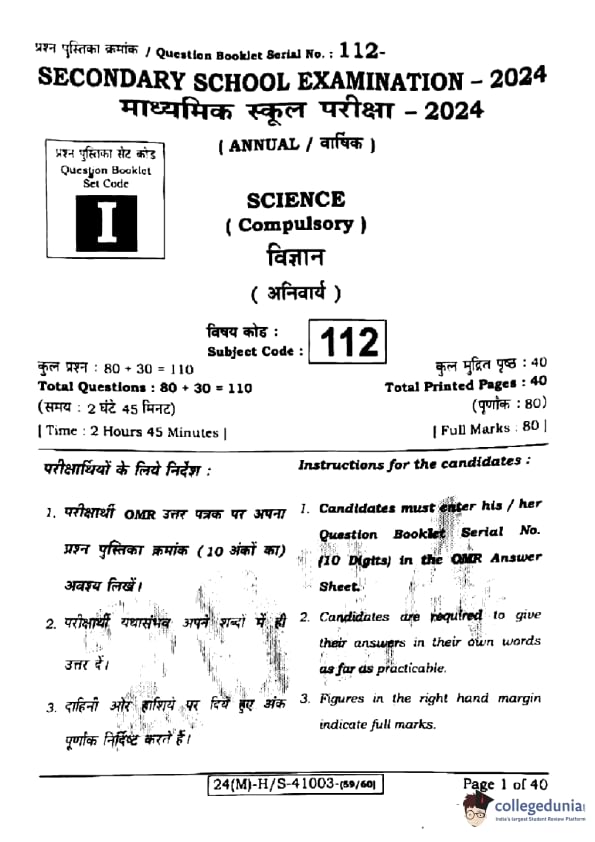
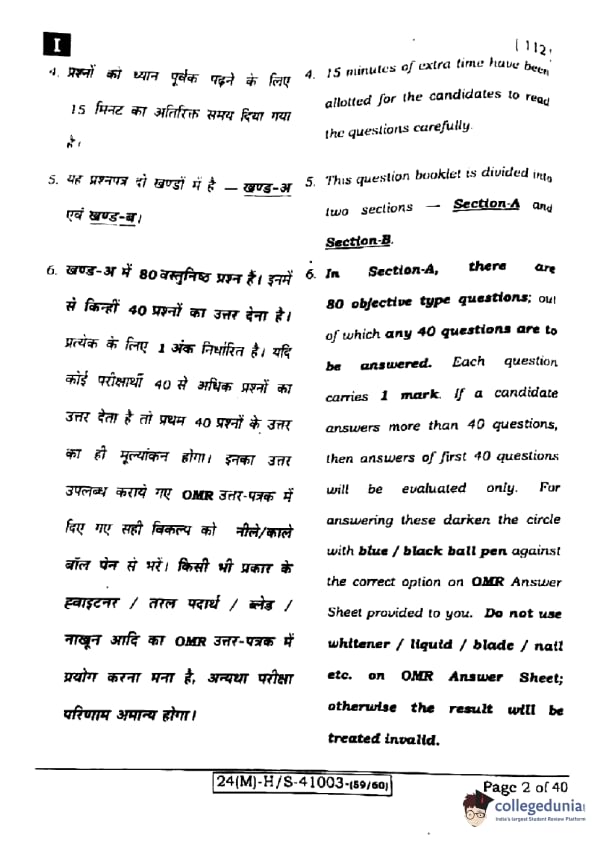


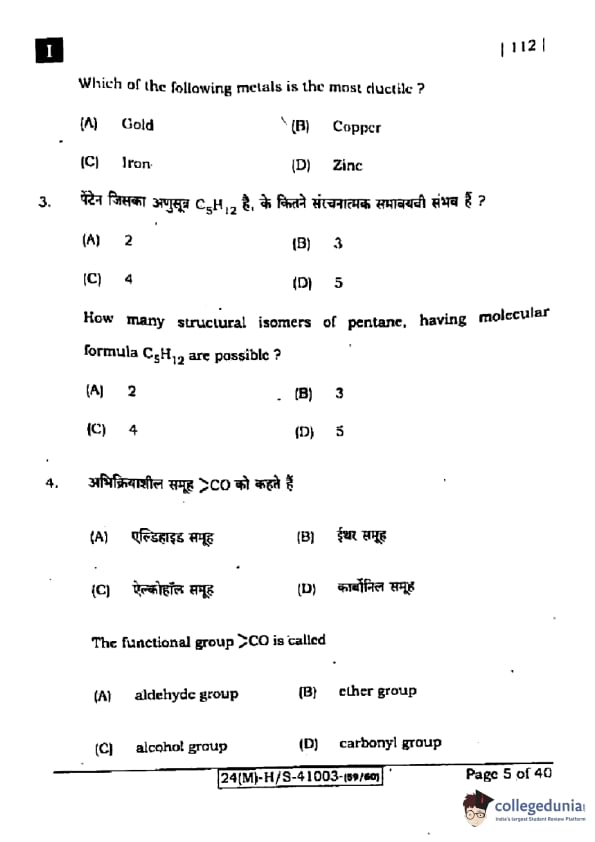
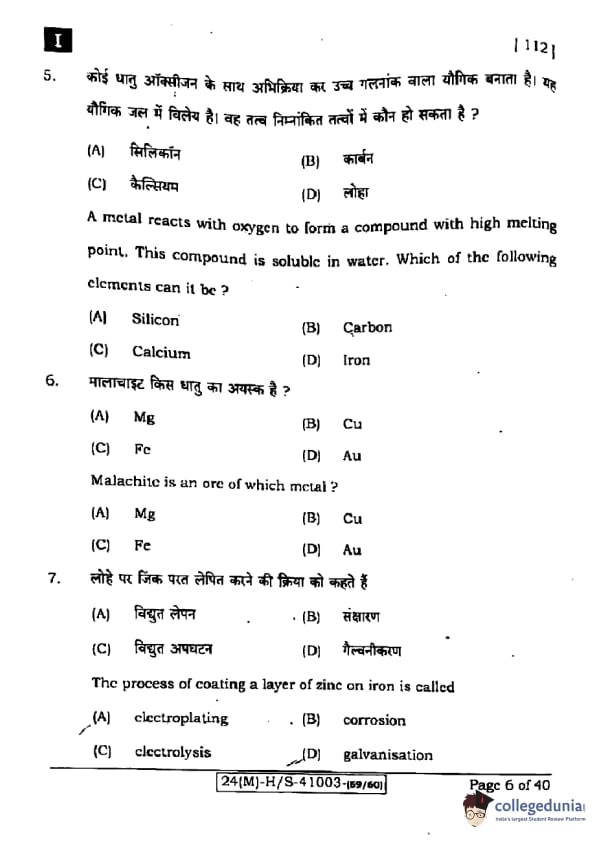
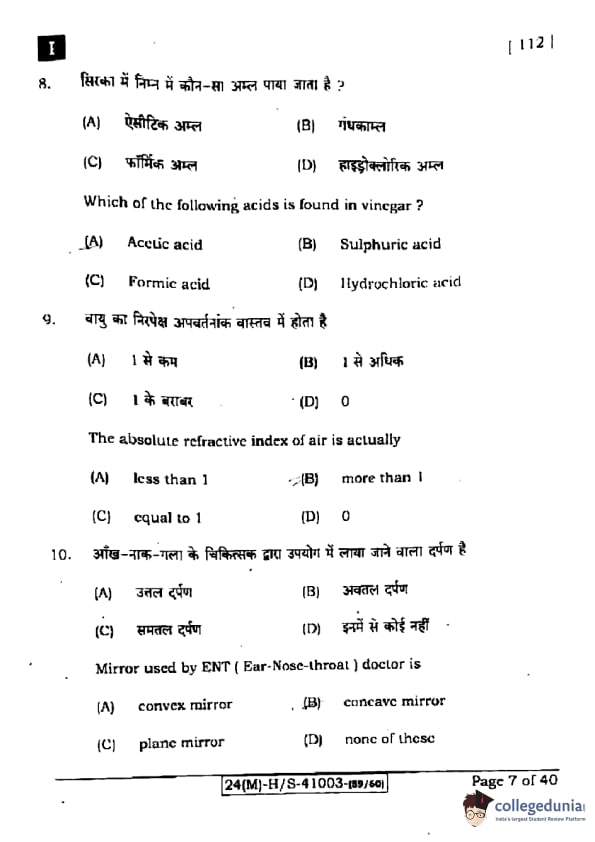
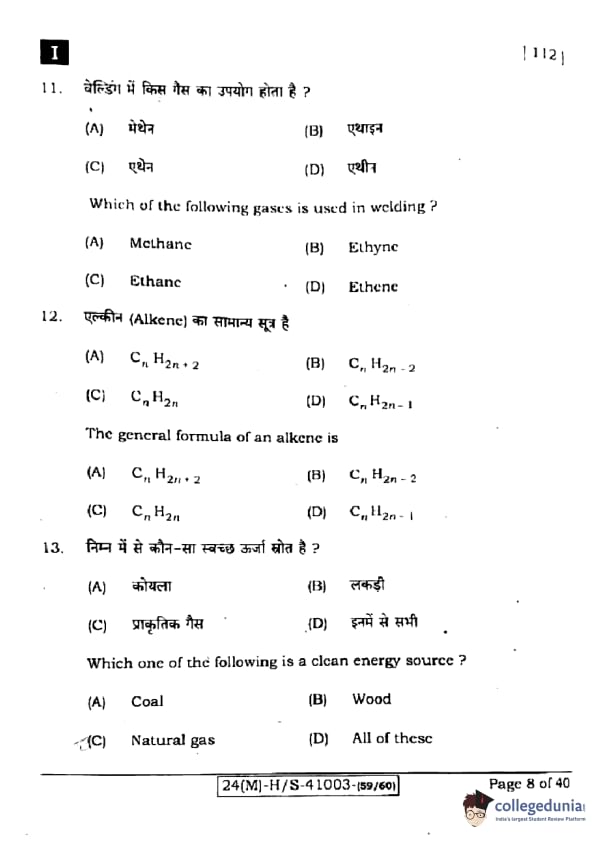
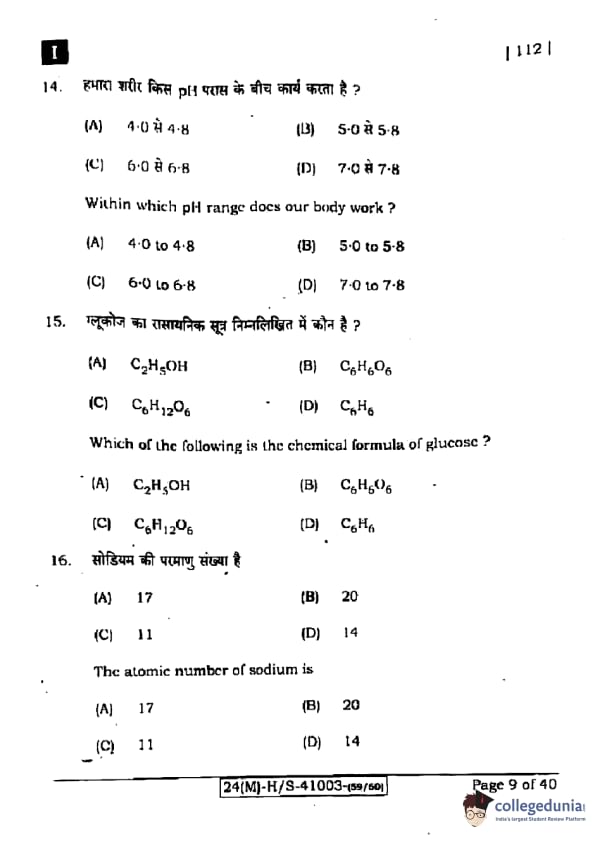


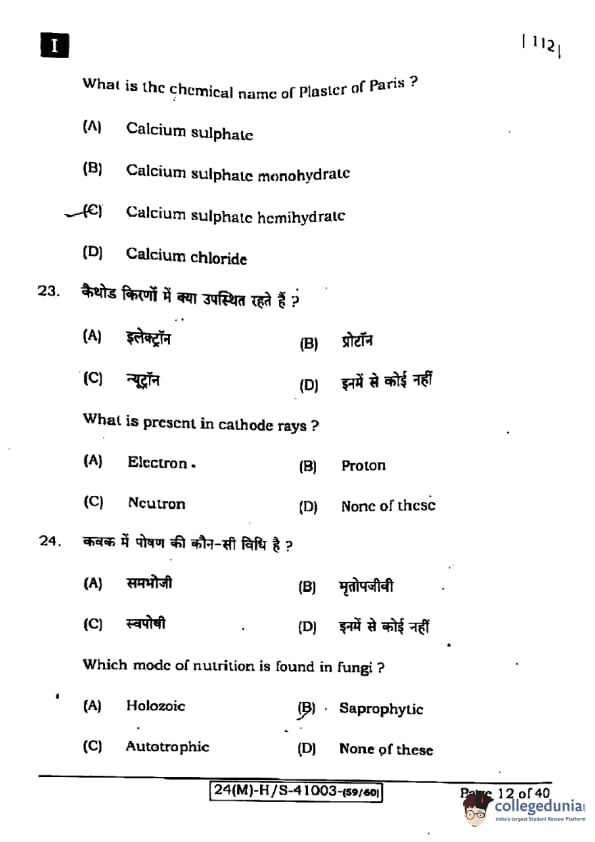

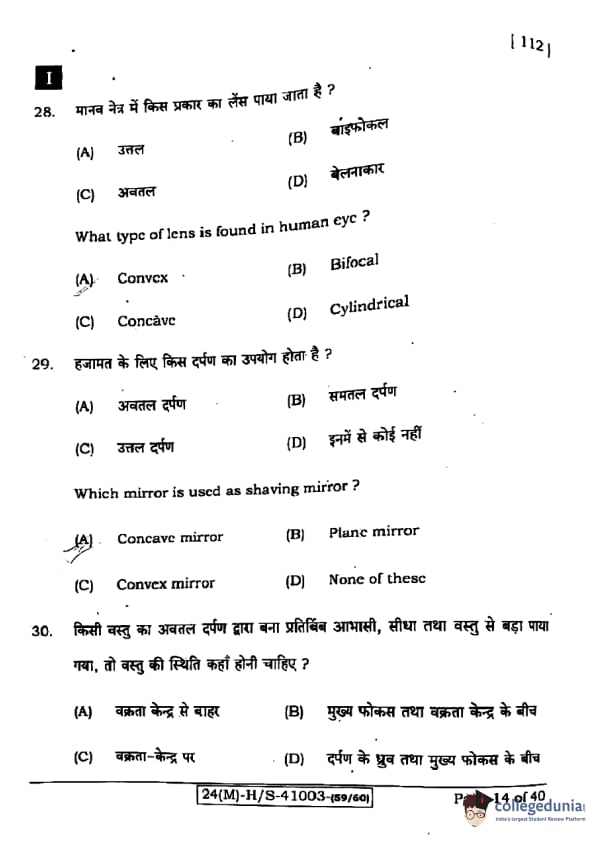


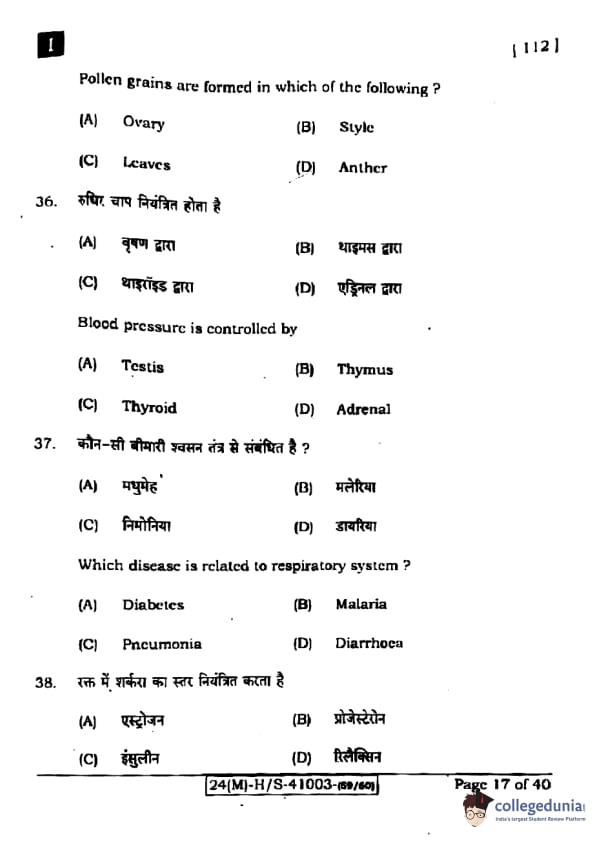

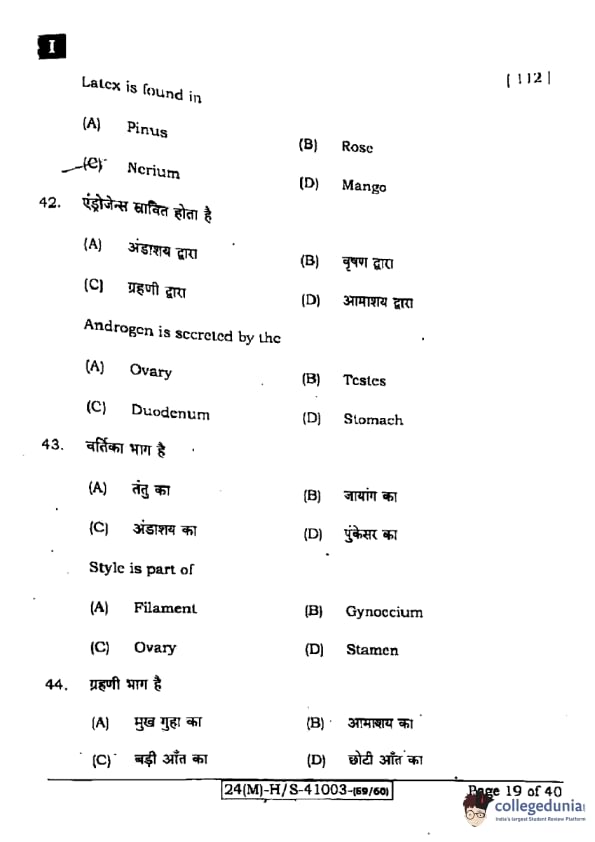
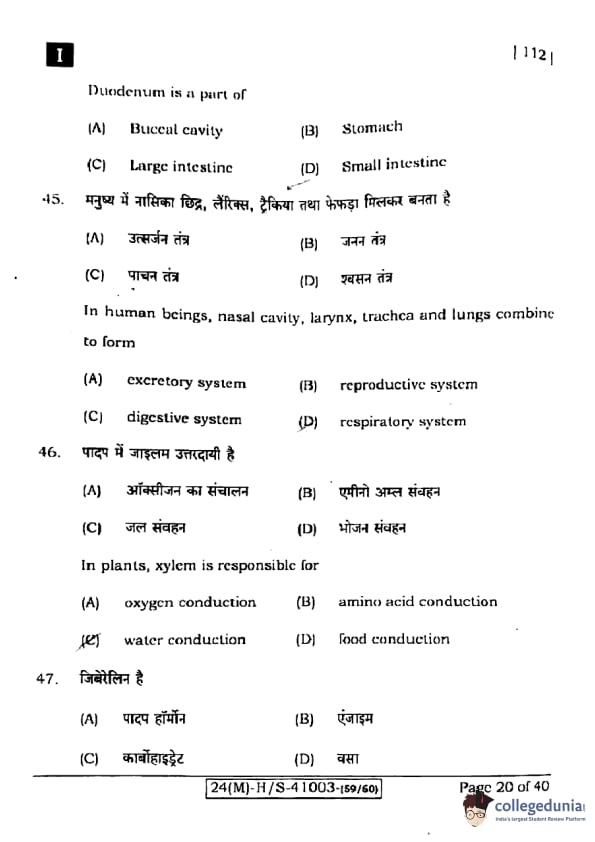
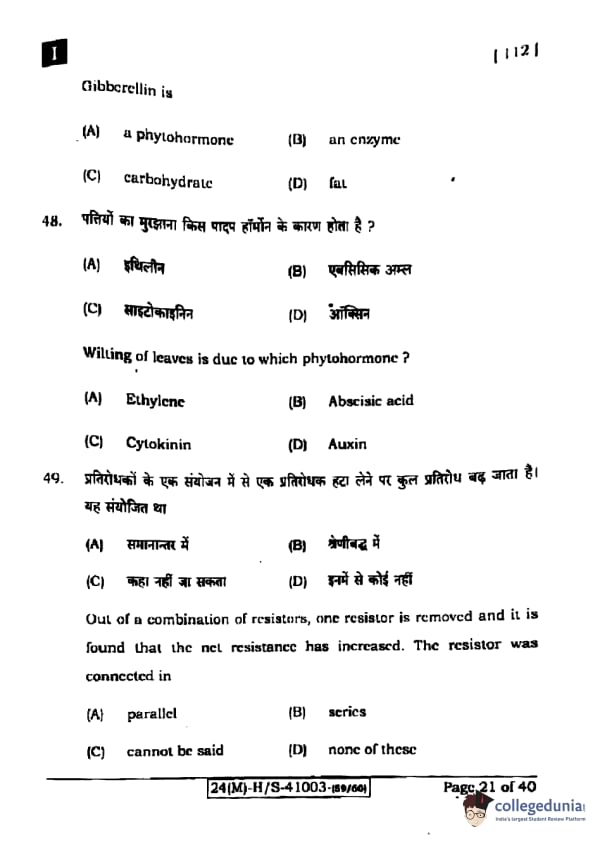
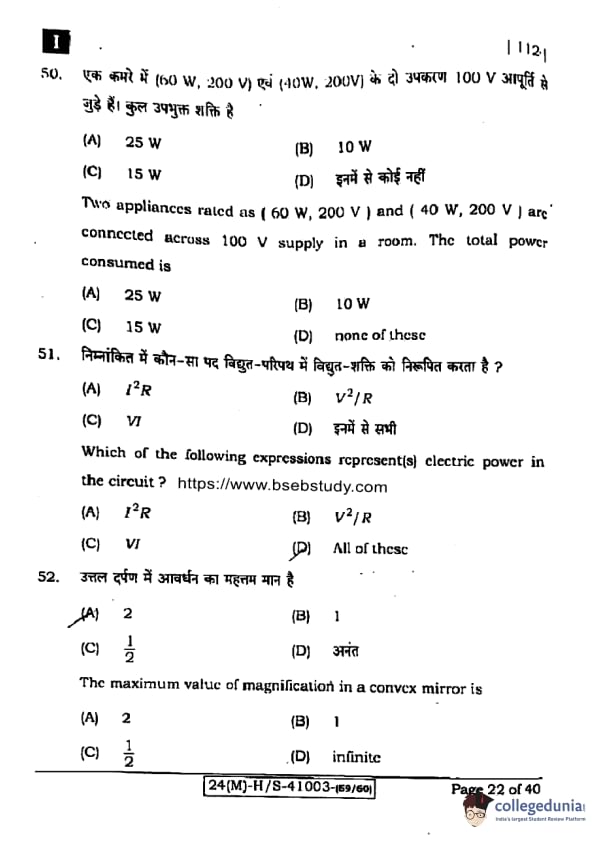










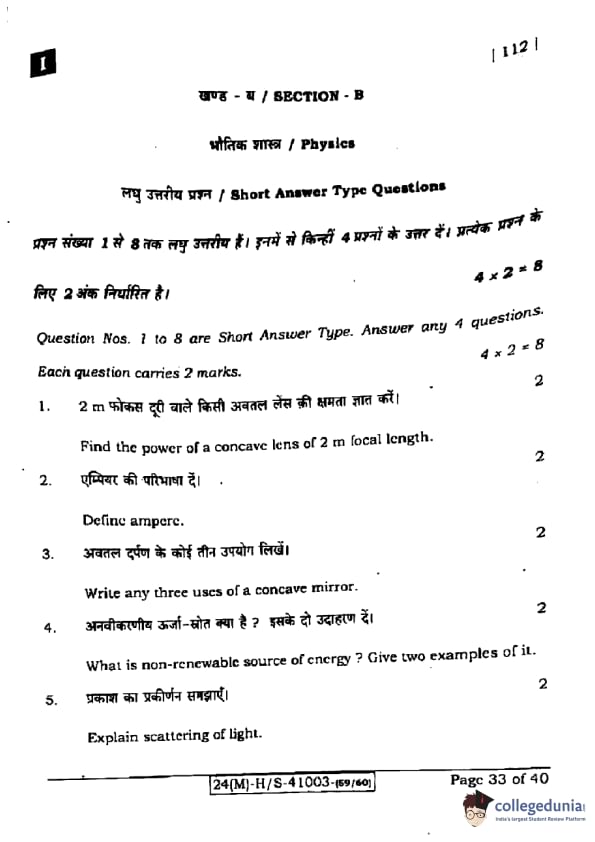



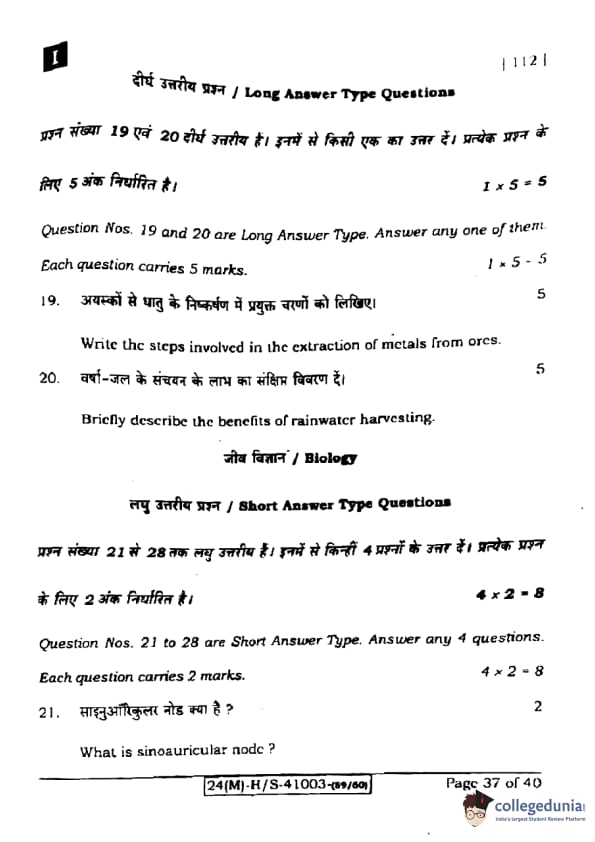



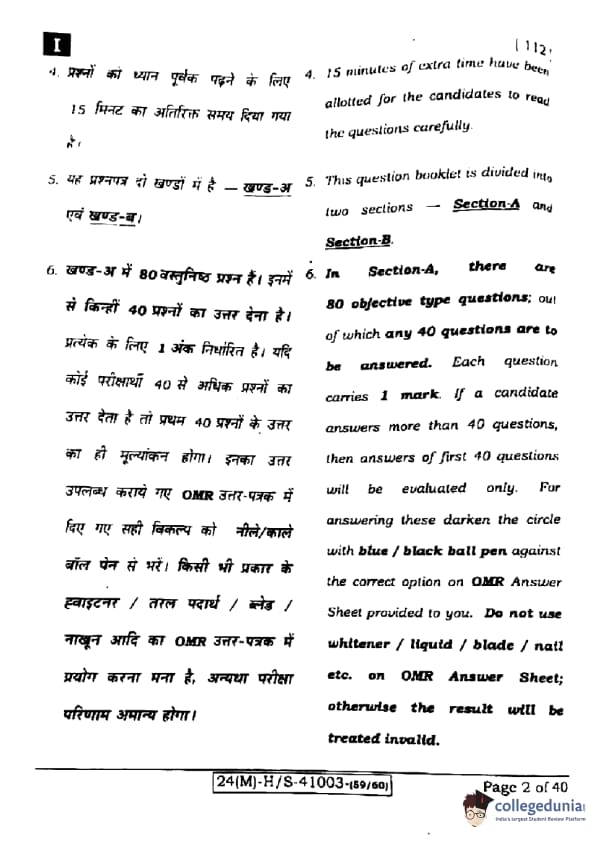
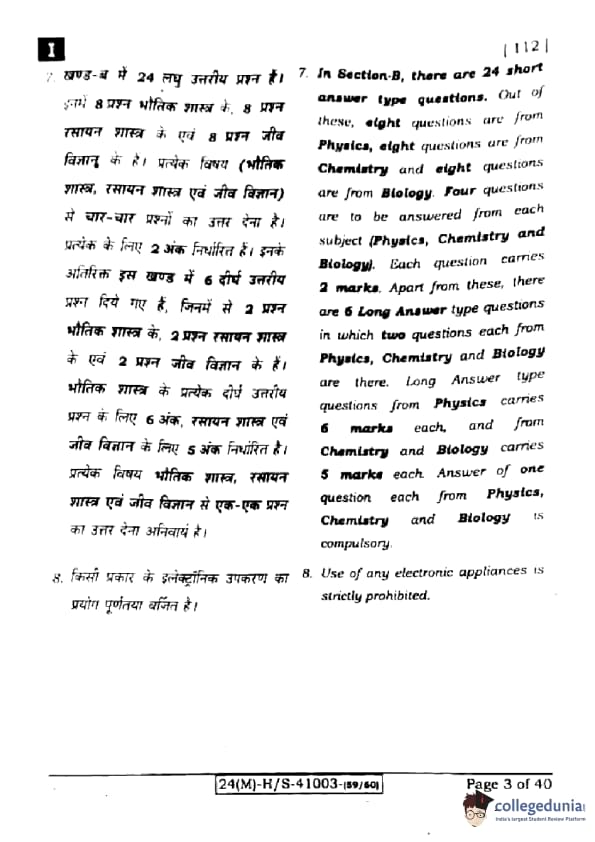
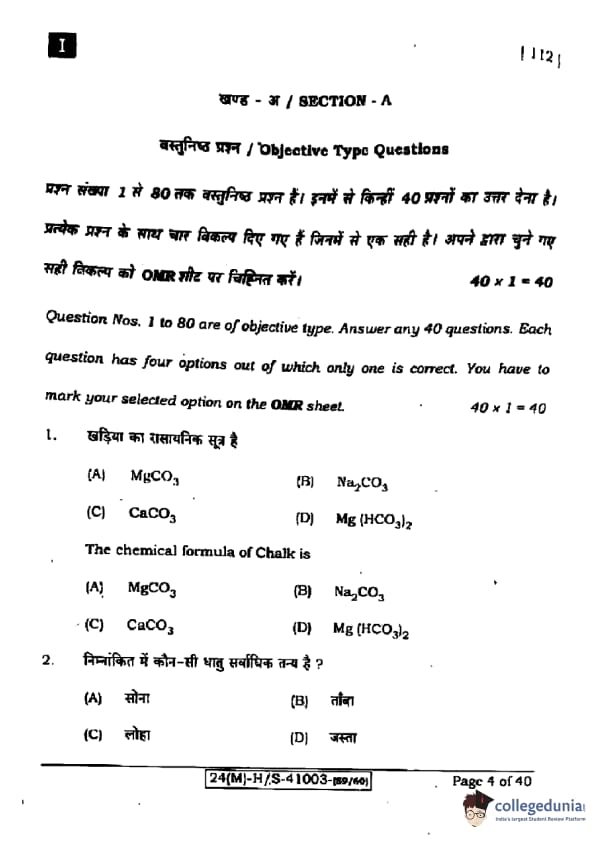

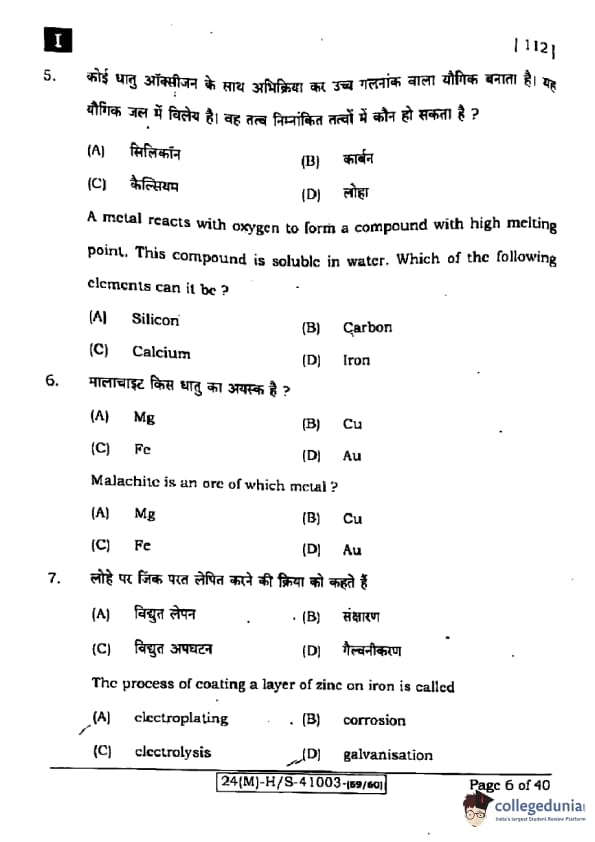
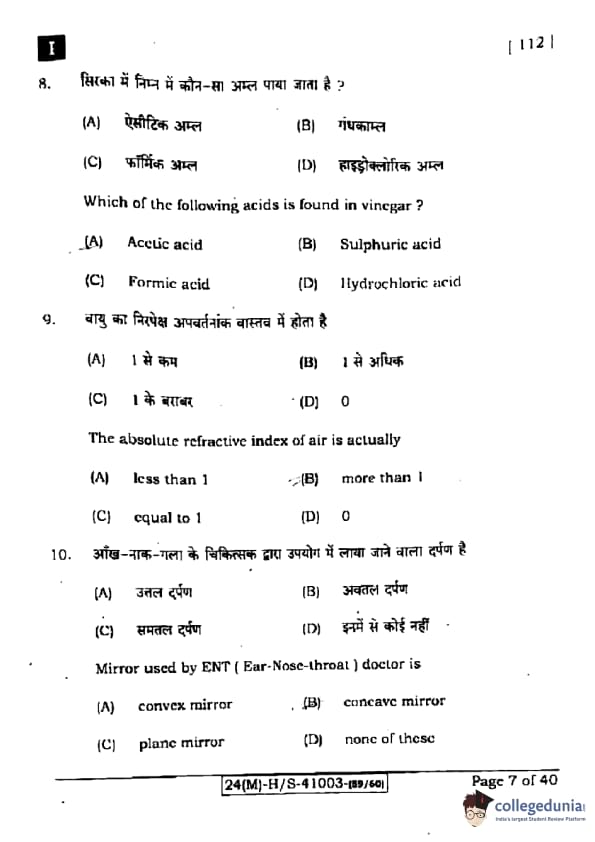
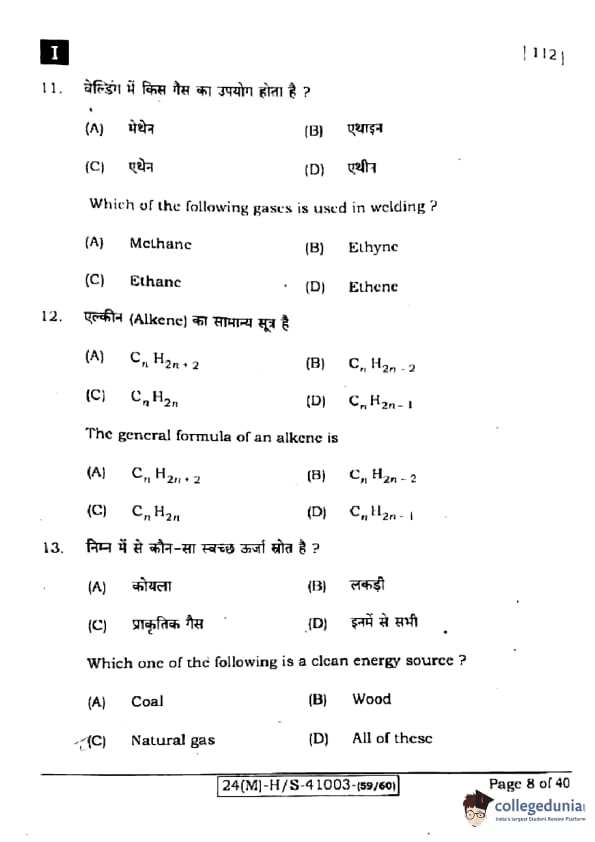
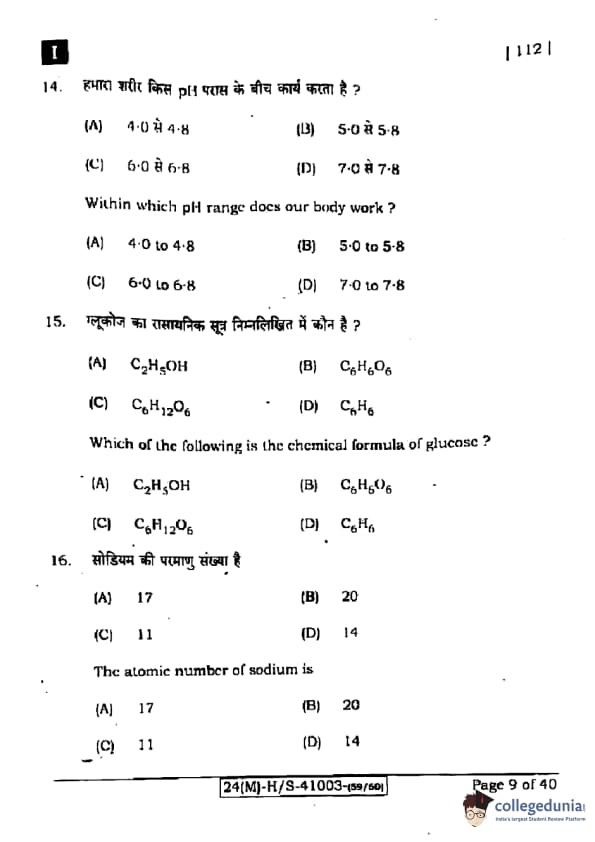

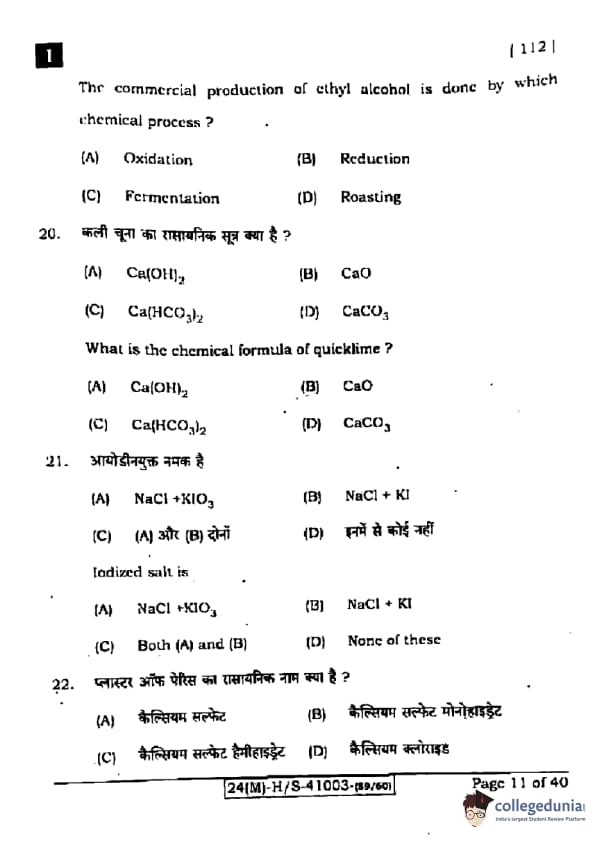
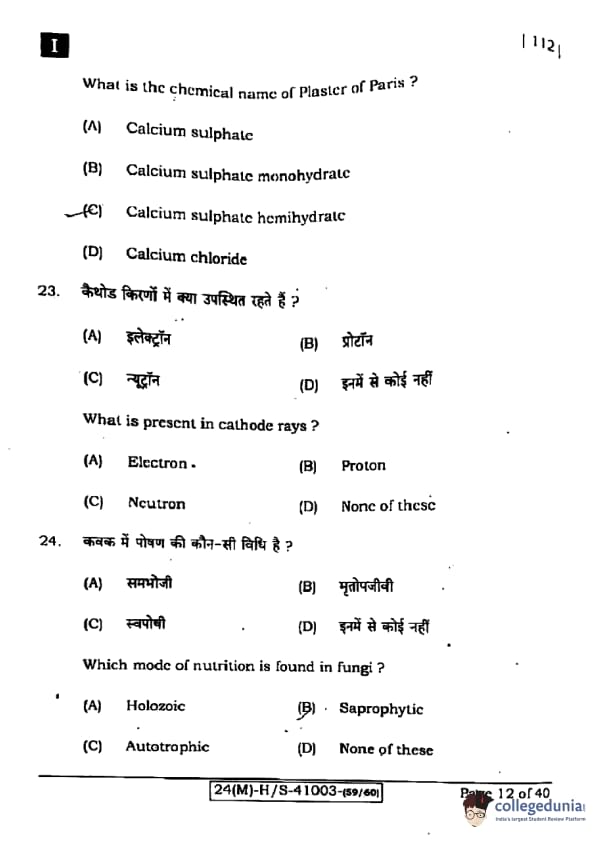
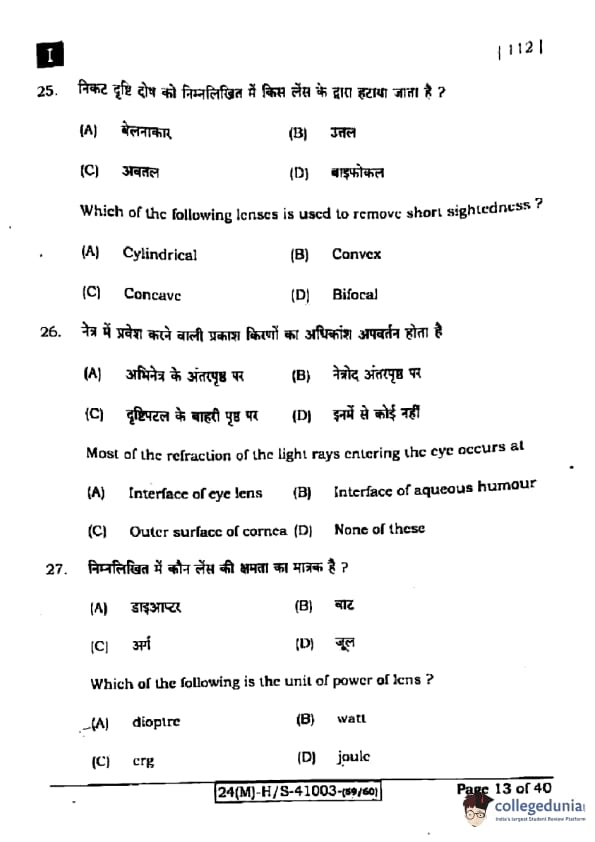

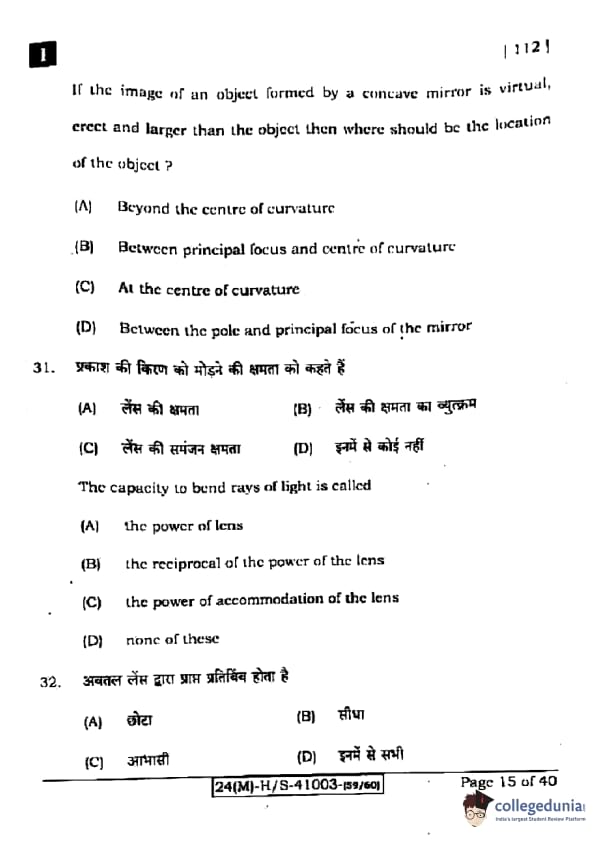



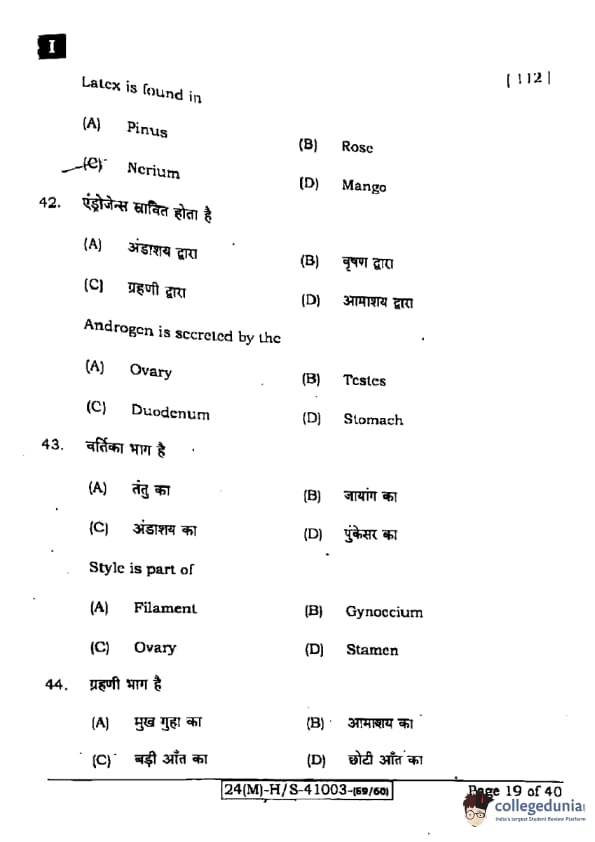
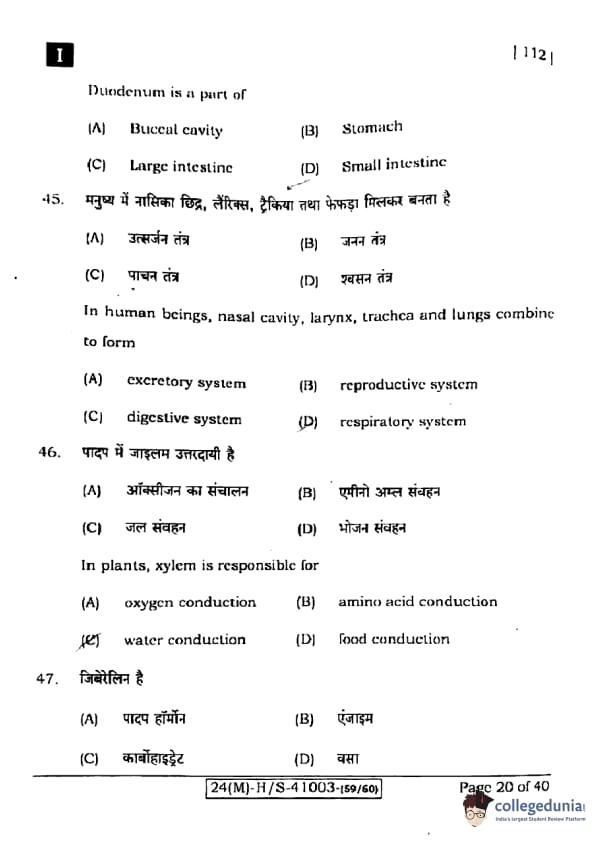


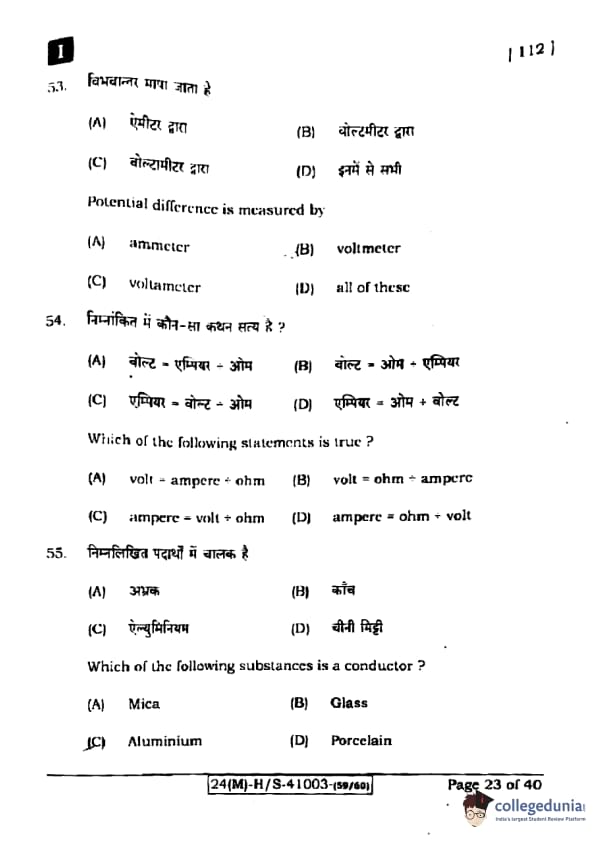
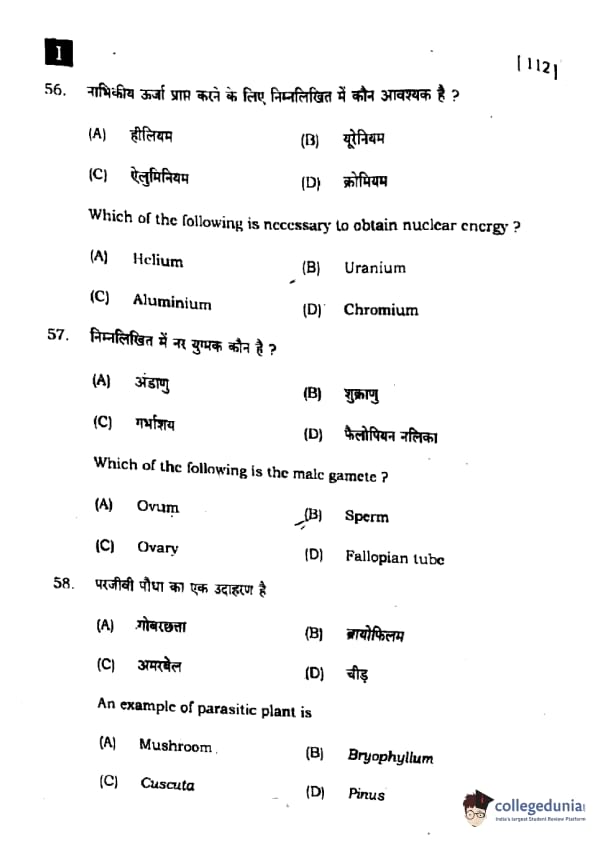

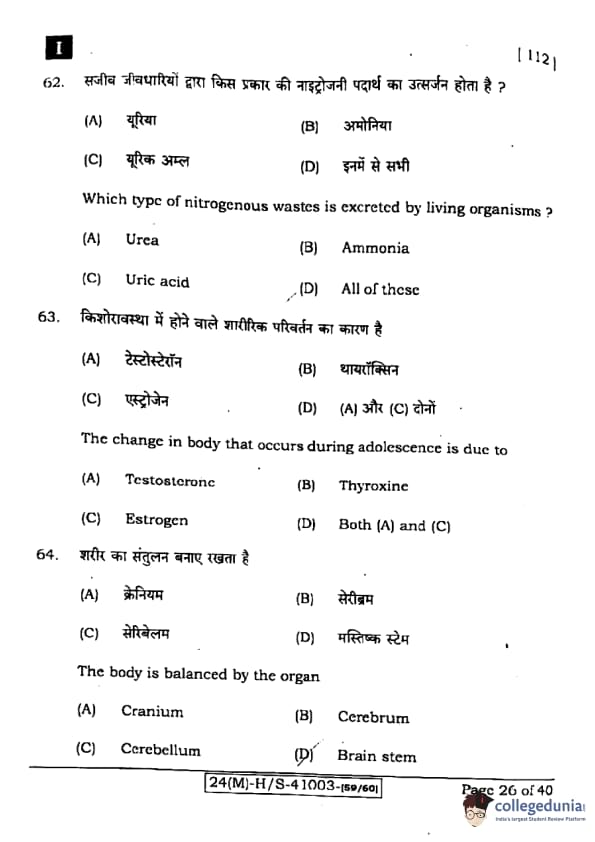
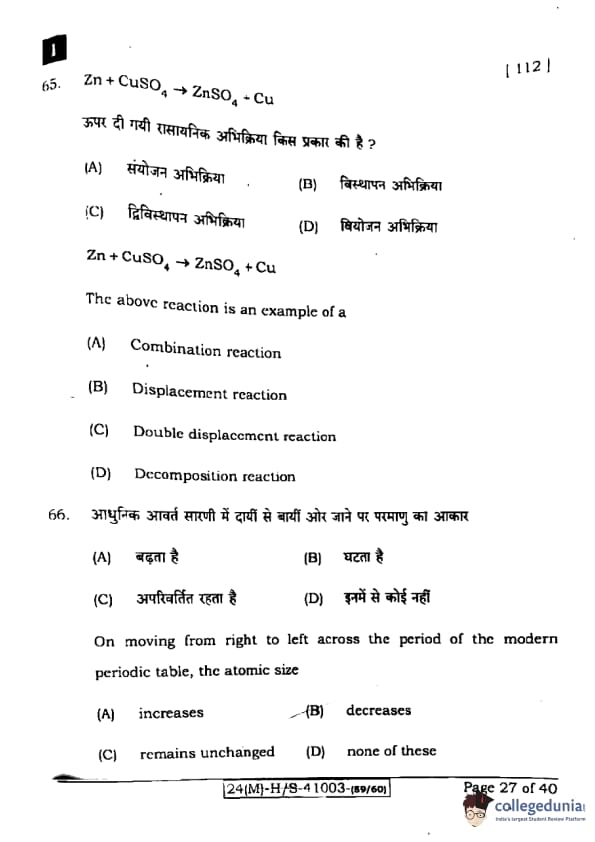
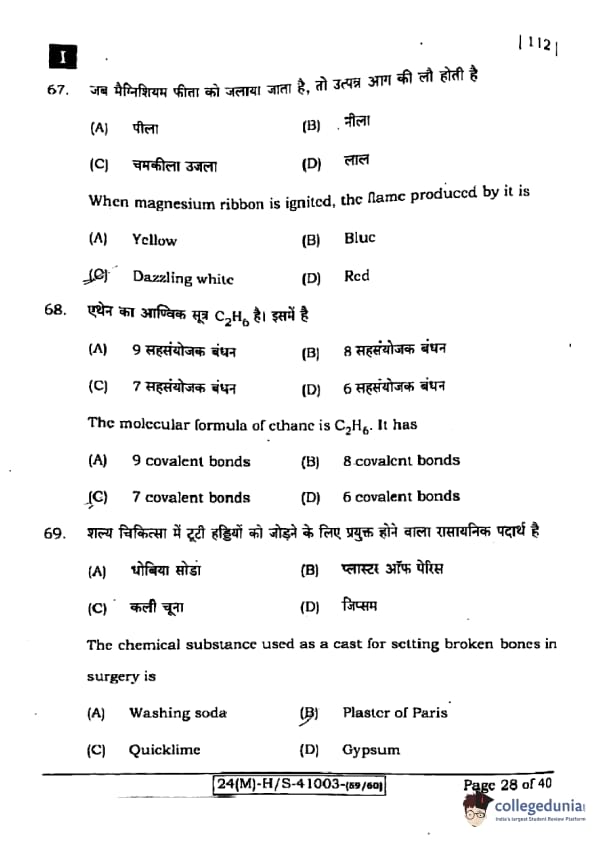
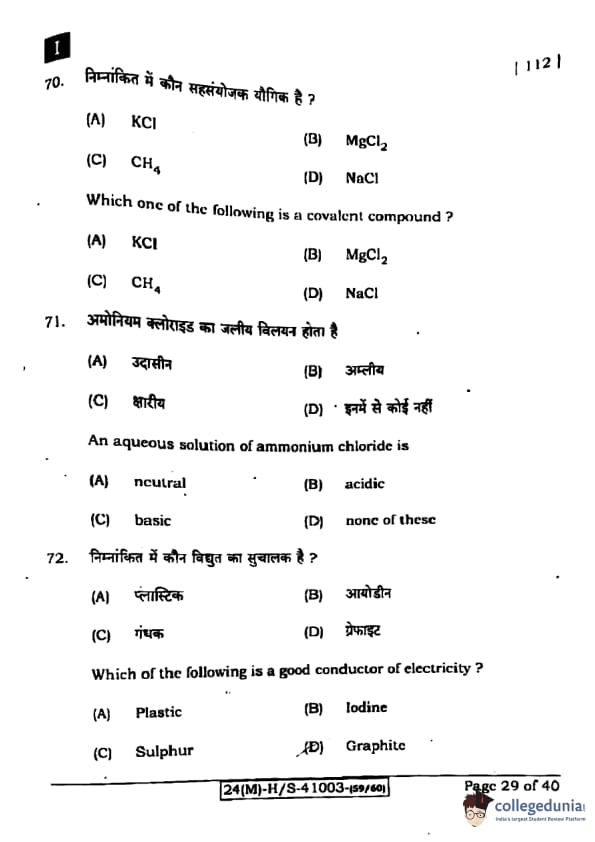

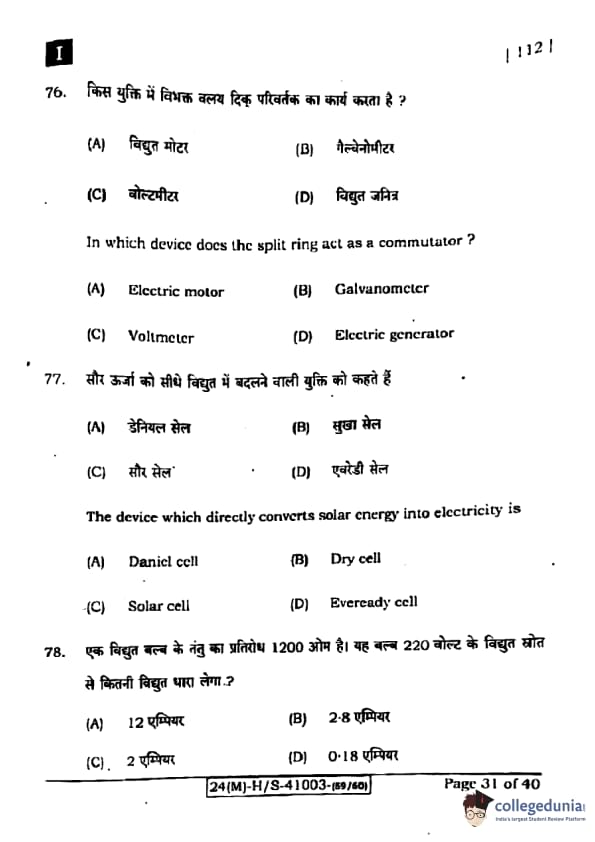


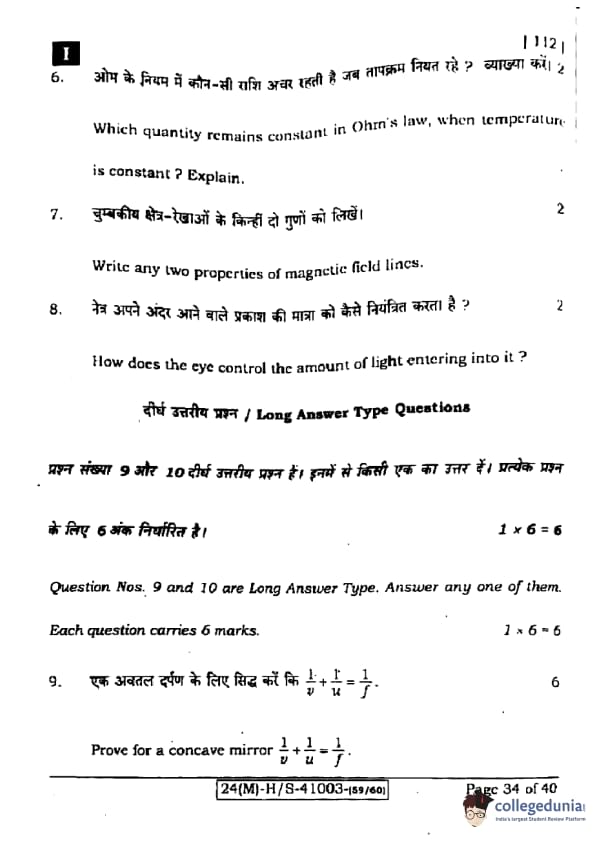
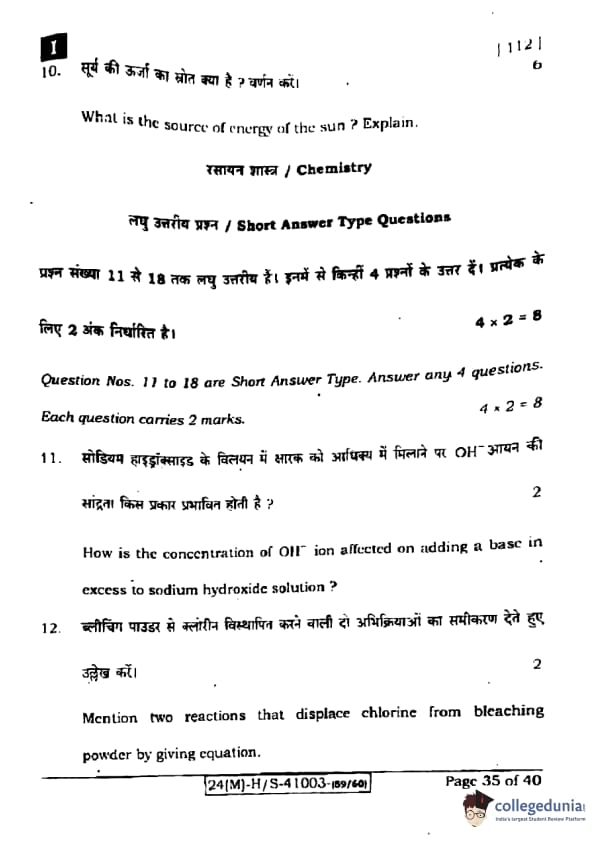
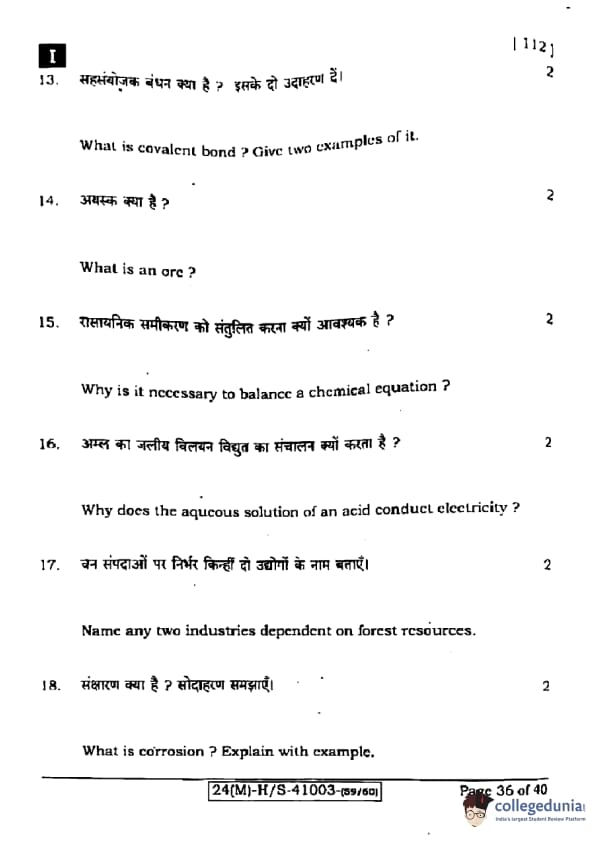
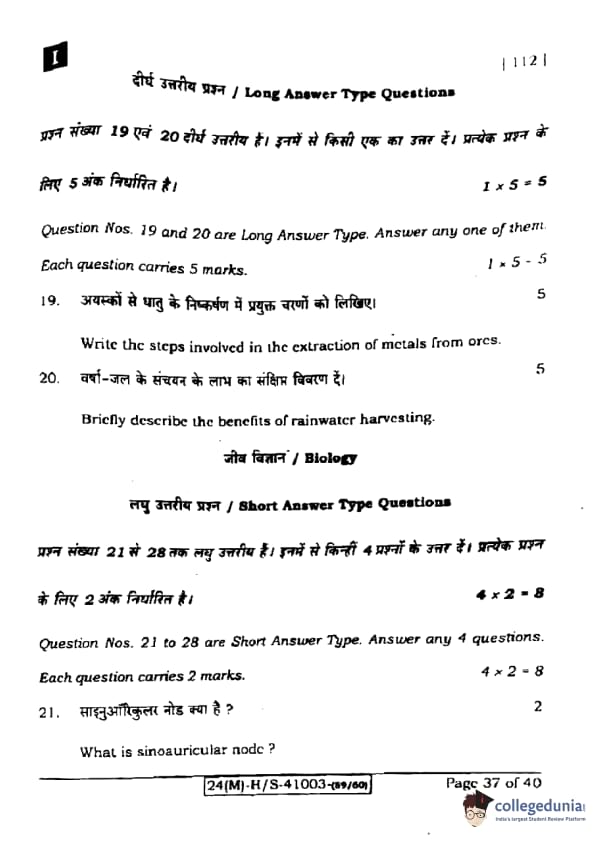

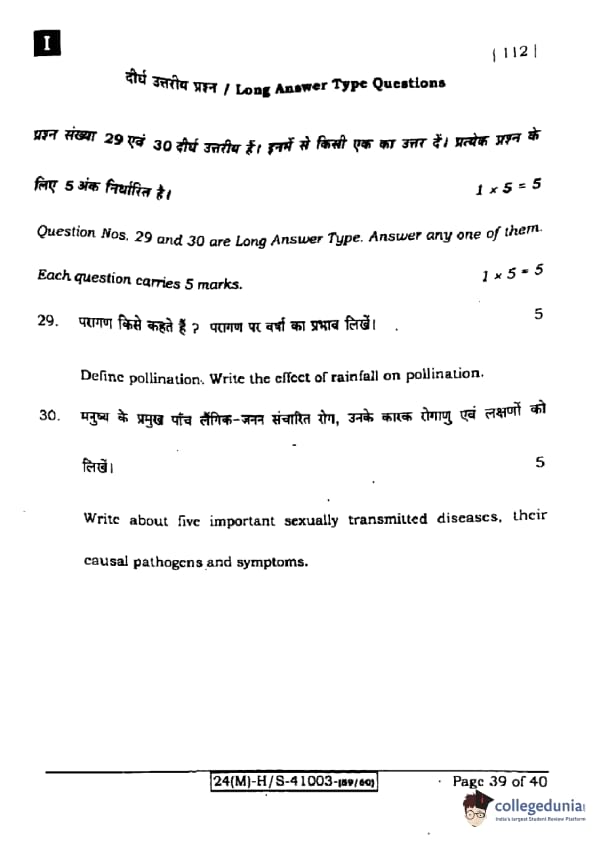



Comments